CAA News Today
CWA Picks: Spring 2024
posted by CAA — Mar 13, 2024
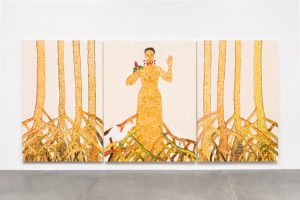
Rosana Paulino, Garça Branca from the Mangrove-Women series, 2023
The exhibitions, screenings, projects, and talks selected for CWA’s Spring Picks hint at the fleeting, ephemeral nature of memory and intimacy. The creatives highlighted here have left their mark, interpreting and imbuing their materials with meaning, often leaving behind evidence of their process.
UNITED STATES
Christina Fernandez: Multiple Exposures
Through April 28
Art on Hulfish Gallery, Princeton, NJ
Princeton University Art Museum’s Art on Hulfish presents a survey of work by Christina Fernandez, a Los Angeles–based artist who has spent more than thirty years conducting a rich exploration of migration, labor, gender, and her Mexican American identity through photography. Whether staged or candid, Fernandez’s photographs record touch and mark making, engaging the medium’s distinct ability to convey surfaces—the surfaces of bodies, architecture, and the images themselves. Multiple Exposures traces the development of the artist’s work from the late 1980s to now.
April 4–August 4
MIT List Visual Arts Center, Cambridge, MA
Since 2015, the Zagreb-born Miletić has worked almost exclusively with hand-produced textiles across several ongoing series.
Her Materials series is comprised of works hand woven on a 1970s loom. As an extension of her formal training as a photographer, their idiosyncratic shapes and color-schemes are based on Miletić’s snapshots of temporary repairs to buildings and objects in urban public spaces. Though never exhibited, her photographs of responsive, ad-hoc constructions become templates for seemingly abstract textile pieces. Her meticulous and time-consuming use of hand work to document the ephemeral repairs reproduces this ethos of care and provides a slowness and material intimacy that Miletić found lacking in photography. Across her various series, Miletić also calls attention to the gendered associations of textile craft, subtly relating forms of historically undervalued labor, like the “women’s work” of weaving, to other narratives of social and economic struggle and the larger political forces that give shape to them.
Through June 15
Nora Eccles Harrison Museum of Art, Utah State University, Logan
Jane Catlin’s career as an artist and teacher has lasted more than forty years. During that time she has produced figural paintings to semi-abstract images of biological forms and processes. Throughout her career, Catlin’s style and content have shifted due to the profound influence of her travels through Japan, Korea, Africa, and Canada. This overview reveals her fascination with biology, ecology, and the environment. The mysterious imagery that results from her visual meditations evokes our mutating world and serves as a reminder of both the beauty and fragility of nature. This exhibition offers a unique opportunity to see some of her most significant works presented together for the first time.
Joan Jonas: Good Night, Good Morning
March 17–July 6
Museum of Modern Art, New York
Joan Jonas creates meditations on bodies, space, time, and nature. As she has explained, “The performer sees herself as a medium: information passes through.” The most comprehensive retrospective of Jonas’s work in the United States, this exhibition provides new insights into the artist’s process, unprecedented access to archival materials, and fresh historical perspectives on Jonas’s work. Drawings, photographs, notebooks, oral histories, film screenings, performances, and a selection of the artist’s installations, drawn from MoMA’s collection and institutions around the world, will trace the development of Jonas’s career, from works made in the 1960s and 1970s exploring the confluence of technology and ritual to more recent ones dealing with ecology and the landscape.
Joyce J. Scott: Walk a Mile in My Dreams
March 24–July 14
Baltimore Museum of Art
This fifty-year career retrospective celebrates one of the most significant artists of our time. Best known for her virtuosic use of beads and glass, Scott’s work across varying media beguiles viewers with beauty and humor while confronting racism, sexism, ecological devastation, and complex family dynamics. The exhibition includes more than 120 objects ranging from woven tapestries and soft sculpture from the 1970s and audacious performances and wearable art in the 1980s to sculptures of astonishing formal ingenuity and social force from the late 1970s to the present moment.
On April 11, 6:30–8:30 p.m. Joyce J. Scott will appear with longtime collaborator Kay Lawal-Muhammad, in a conversation moderated by Tracey Beale, BMA Director of Public Programs.
May 3–August 11
The Power Plant, Toronto
June Clark: Witness is the first survey in Canada of the Toronto-based artist June Clark, who, since the late 1960s, has developed a unique and groundbreaking practice spanning photo-based work, text, collage, installation, and sculptural assemblages. In this deeply personal exhibition, she explores how history, memory, and identity—both individual and collective—have established the familial and artistic lineages that shape her work.
Witness brings together four significant bodies of work that stretch from the 1990s to the present, many of them seen here for the first time. These include her iconic installations Family Secrets (1992) and Harlem Quilt (1997); a series of photo-based works from 2004 titled 42 Thursdays in Paris; Perseverance Suite (a new project); and Homage, a collection of sculptural assemblages that, in Clark’s words, “gave me permission to be the artist I am today.”
June Clark: Witness will be presented in tandem with another solo exhibition of the artist’s work at the Art Gallery of Ontario titled June Clark: Unrequited Love.
Thorugh July 21
Harvard University Art Museums, Cambridge, MA
LaToya M. Hobbs: It’s Time presents the series Carving Out Time (2020–21), a life-size suite of woodcuts by the Arkansas-born, Baltimore-based artist. Unfolding over five scenes, the work depicts a day in Hobbs’s life with her husband and children. Hobbs shares the labor and intimacy of her private life in these prints, centering the negotiations she brokers daily to balance her manifold responsibilities—as a wife, mother, educator, and artist. The series is also a powerful statement about her influences and self-fashioning as an artist: references to paintings, sculptures, and prints by prominent artists such as Elizabeth Catlett, Alma Thomas, Valerie Maynard, and Kerry James Marshall appear throughout. Carving Out Time is a part of Hobbs’s ongoing Salt of the Earth project, which she characterizes as “the personification of Black women as salt in relation to their role as preservers of family, culture and community.”
Lauren Lee McCarthy: Bodily Autonomy
Through May 25
Mandeville Art Gallery, University of California San Diego, La Jolla
Bodily Autonomy is Lauren Lee McCarthy’s largest US solo exhibition to date. For the past fifteen years, McCarthy has worked in performance, video, installation, software, artificial intelligence, and other media to address how an algorithmically determined world impacts human relationships and social life. The show brings together two major series of works—Surrogate and Saliva—to examine the current state of bio-surveillance in times of rapid technological development and increased corporate and government surveillance.
Loie Hollowell: Dilation Stage
Through April 20
Pace Gallery, New York
Hollowell will present ten new pastel drawings that document the dilation stage of labor. Displayed sequentially on a rounded wall, these drawings feature depictions of Hollowell’s own pregnant abdomen, rendered to scale. Below each belly is a circle the exact size of the effaced cervix as it expands. The cervical “circles” at the bottom of each drawing seem to pulse as the series progresses, culminating in a blazing cadmium red.
In addition to these drawings, the exhibition will include a unique birthing bench that Hollowell created collaboratively with her husband, sculptor Brian Caverly. The birthing chair has been used by women in labor throughout millennia and the rendition here, which visitors are invited to sit on, is created not just for the birther, but also for the partner, midwife, doula, doctor, or any other witness to the transcendent journey of birth.
Dilation Stage will coincide with Hollowell’s first museum survey, on view at the Aldrich Contemporary Art Museum in Ridgefield, CT, through August 11.
Modern Art for an Old Tale: Fuku Akino’s Illustrations for “The Dwarf Pine Tree”
Through July 31
Zimmerli Art Museum, Rutgers University, New Brunswick, NJ
This exhibition presents more than twenty illustrations for The Dwarf Pine Tree by Fuku Akino (1908–2001), a Kyoto-based painter and teacher who was one of Japan’s most prominent woman artists during her lifetime. Published in 1963, The Dwarf Pine Tree is a modern retelling of a Japanese folk tale whose main character is a pine tree, an important symbol in Japanese culture representing love and endurance. The book is one of several collaborations between Akino, the author Betty Jean Lifton, and the editor Jean Karl, who promoted her vision to publish complex and culturally diverse stories for young American readers such as those written by Lifton, an American resident of Japan, and illustrated by Akino.
Through July 7
Brooklyn Museum, New York
“What does a Black person look like today in those places where Africans were once sold, a century and a half ago?” asks artist Nona Faustine (b. 1977). Using her own body, she interrogates this question in her photographic series White Shoes. Forty-two self-portraits show Faustine standing in sites across New York City, from Harlem to Wall Street to Prospect Park and beyond, that are built upon legacies of enslavement in New York—one of the last Northern states to abolish slavery. On her feet are a pair of sensible white pumps, which speak to the oppressions of colonialism and assimilation imposed on Black and Indigenous peoples locally, nationally, and globally. Otherwise nude, partially covered, or holding props, Faustine is at once vulnerable and commanding, standing in solidarity with ancestors whose bodies and memory form an archive in the land beneath her shoes. White Shoes is the artist’s first solo museum exhibition and the first complete installation of this consequential series.
April 11–September 22
Madison Square Park and Inwood Hill Park, New York
Seed explores the personal and collective experiences that have influenced artist Rose B. Simpson’s life and work with a series of new large-scale sculptures appearing in two major public parks in Manhattan. In Madison Square Park, Simpson assembles seven monumental androgynous sentinel figures fabricated in steel with bronze adornments around a central sculpture of a young female figure emerging from the earth. In addition, two life-size bronze sentinels stand watch in Inwood Hill Park, a contested space in Native American history as the site where Dutch colonial governor Peter Minuit “purchased” Manhattan Island from the Lenape in 1626. This marks Madison Square Park Conservancy’s first collaboration with another New York City public park.
Sarah Maldour: Tricontinental Cinema
Through April 28
Wexner Center for the Arts, Ohio State University, Columbus
Tricontinental Cinema explores Maldoror’s five-decade career as a maker of revolutionary cinema, tracing her involvement with Black liberation movements in France, Africa, and the Caribbean. Through an immersive, multisensory landscape of films, photographs, poetry, and letters, the exhibition invites you to experience the full scope of Maldoror’s radical practice.
A legendary filmmaker, Maldoror completed more than forty-five shorts, documentaries, and feature films before her death in 2020. Many of these works rewrite the rules of films focusing on resistance and rebellion, casting women as protagonists in movements dominated by men.
The exhibition includes several large-scale works by contemporary artists, including a monumental fiber sculpture by renowned Canadian artist Kapwani Kiwanga. It also features a newly commissioned mural, painted on-site, from Paris-based artist Maya Mihindou. Framing Maldoror’s films and archives, these works form a constellation of Black and Afro-Surrealist practices while amplifying the continued resonance of her work today.
Through August 18
Nasher Sculpture Center, Dallas
Always attuned to the built environment, Sze’s new site-specific installations across three gallery spaces integrate painting, sculpture, images, sound, and video with the surrounding architecture to create intimate systems that reference the rapidly changing world. This extraordinary new exhibition will blur the boundaries between making and showing, process and product, digital and material ultimately to question how objects acquire their meaning.
Northern California Women’s Caucus for Art: The 6000 Circle Project
Through April 6
Arc Project Gallery, San Francisco
In collaboration with The Calling (artists Yasmin Lambie-Simpson, Chantelle Goldthwaite, and Sheila Metcalf-Tobin) and the Northern California Women’s Caucus for Art (NCWCA) chapter of the Women’s Caucus for Art (WCA), anyone interested in participating in this international art initiative is welcome! The 6000 Circle Project focuses on the circle as a symbol of balance and unity, a never-ending container of feminine energy and light. The Calling envisions 6000 circles created by a multitude of artists from around the globe. The 6000 Circle Project opens with more than 300 circles on the walls at Arc. Through the course of the exhibition, the public will be invited to make circles to add to the walls.
March 15, 6 –9 p.m.
MIT Bartos Theater, Cambridge, MA
Renowned Inuit lawyer Aaju Peter has led a lifelong fight for the rights of her people. But while launching an effort to establish an Indigenous forum at the European Union, Aaju finds herself facing a difficult, personal journey to mend her own wounds after the unexpected passing of her son. In this “powerful exploration of cultural trauma” (The Film Stage), director Lin Alluna follows alongside Aaju Peter as she strives to reclaim her language and identity after a lifetime of whitewashing and forced assimilation.
The screening will be followed by a Q&A discussion. Free and open to the public. Doors open at 5:30 p.m.
Panel: Vision is a Battlefield: Histories of Race and Media
March 26, 6:30 p.m.
Segal Theatre Center, CUNY Graduate Center, New York
How is our basic perception of the world influenced by concepts of racial identity? Join moderator Claire Bishop, professor of art history at the CUNY Graduate Center, for an illuminating discussion with the authors of four recent books exploring the intertwined histories of photography, media, and race. The panel features Brooke Belisle, associate professor of art at Stony Brook University, speaking on computational imagery and AI; Emilie Boone, assistant professor of art history at New York University, on Harlem Renaissance photographer James Van Der Zee; Monica Huerta, assistant professor of English and American studies at Princeton University, on the aesthetics of racial capitalism; and Nicholas Mirzoeff, professor of media, culture, and communication at New York University, on the visual politics of whiteness.
April 18, 6:30 p.m.
Segal Theatre Center, CUNY Graduate Center, New York
Natalie Dykstra’s Chasing Beauty is the vivid and masterful biography of Isabella Stewart Gardner—creator of one of America’s most stunning museums and a true American original. A wealthy Boston socialite at the turn of the twentieth century, Gardner was misunderstood for her eccentric lifestyle, but found her niche as a patron and friend to artists, including John Singer Sargent, who painted her portrait. Dykstra illuminates how the museum and its holdings can be seen as a kind of memoir created with objects, displayed per Gardner’s wishes, including not only masterwork paintings but tapestries, rare books, prints, porcelains, and fine furniture. Dykstra speaks about the new book with Rachel Cohen, author of A Chance Meeting: Intertwined Lives of American Writers and Artists.
MEXICO
War and Peace: A Poetics of Gesture
Through June 30
Museo Universitario de Arte Contemporáneo, Mexico City
Beatriz González is one of the most renowned living Latin American painters and one of the key references of her country’s culture. War and Peace: A Poetics of Gesture is a new review of Beatriz González’s work. This is the first monographic exhibition of the painter’s work to be held in Mexico: it will offer both an overview of her work and an original investigation of her approach to the figure and gestures as a vehicle for emotional communication.
CANADA
un/tangling, un/covering, un/doing
Through March 17
Surrey Art Gallery, British Columbia
From the moment of birth, hair takes on multifaceted meanings. Rooted within storytelling by families and communities, the politics of hair have been both intimately personal and profoundly social.
Artists from across Canada—including Audie Murray, Becky Bair, Wally Dion, Clare Yow, Sharon Norwood, Sarindar Dhaliwal, Karin Jones, Baljit Singh, Kiranjot Kaur, and Natasha Kianipour—offer reflections on how hair embodies the importance of culture. In this exhibition, artists employ compelling storytelling that express connections intertwined with familial teachings and their own informed experiences.
SOUTH AMERICA
March 22–June 10
Fundación Malba Museo de Arte Latinoamericano de Buenos Aires
This is the first comprehensive exhibition to be held outside Brazil of the work of Rosana Paulino (b. 1967). It includes works made between 1994 and 2024, and approaches her oeuvre from the concept of “Amefricana” as proposed by the Brazilian philosopher Lélia Gonzáles.
Paulino’s poetic interventions reinscribe the archives of the African diaspora in South America. They do so through constant dialogue between personal and historical archives, reconceptualizations of Brazilian art, interrogations of the matrixes of Western science, and through an approach to the circumstances of black women in Brazilian and Latin American societies. The exhibition includes five large installations, displayed together with drawings, engravings, and video organized into four conceptual hubs that are not separate zones, but rather axes of meaning that run through almost all of Paulino’s works.
ASIA
Jorinde Voigt and Xiyadie: 2.0
Through May 4
Gallery P21, Seoul
In 2.0 paper transcends its two-dimensional origins to become a silent narrator telling tales of delicacy, rebellion, and existence. The title of the show is tri-fold: the exhibition is the first in the gallery’s new “2.0” space; the show comprises the work of two artists; and the binary symbolism behind the numbers: 2, which represents existence and material, and 0, which represents absence or the subconscious. The overlap of these artists’ practices is predominantly material, but presenting them alongside one another brings out conceptual overlap, allowing alternate readings of each artist’s works. For both artists the fragility of each cut or fold becomes a poetic marker of time, capturing moments in the evolution of the artwork. Both artists, through their engagement with paper, participate in a form of archiving, be it of cultural narratives or conceptual explorations.
EUROPE & UK
May 17–August 11
Kunsthalle Basel
For her first institutional exhibition in Switzerland, the Swedish artist Ghislaine Leung (b. 1980) presents a new, site-specific project. Leung’s artistic practice is characterized by a rigorous, conceptual approach that often traces physical and economic circuits as much as institutional and societal mechanisms. The result are artworks—which she considers “events”—that emerge from her interest in the various structures underlying commodities, sites, and human relations.
Leung’s work is also on view in the Turner Prize 2023 Shortlist Exhibition at Towner Eastbourne, UK, and in a solo show at the Renaissance Society, Chicago, both through April 14.
March 20–June 9
Städel Museum, Frankfurt
Käthe Kollwitz (1867–1945) chose prints and drawings as her essential media, finding in them an independent visual language of great immediacy. This exhibition presents more than 110 works on paper, sculptures, and early paintings by the artist from the collection as well as from leading museums and Kollwitz collections. Surprising, unconventional works and selected sculptures will be presented together with loans from around Germany to highlight her independent pictorial language that was distinguished by an incisive immediacy to respond to the essential questions of humanity and address troubling topics.
A major Kollwitz retrospective exhibition will be on view at the Museum of Modern Art, March 31 – July 20.
Shahzia Sikander: Collective Behavior
April 20–October 20
Venice Biennale
Shahzia Sikander: Collective Behavior is the most comprehensive presentation of the artist’s work to date, bringing together more than thirty works made over the past thirty-five years, including new site-specific drawings and glasswork created for this exhibition.
Collective Behavior traces Sikander’s ever-evolving explorations of gender, race, and colonial histories. The exhibition includes her breakthrough work The Scroll (1989–90), which established her position at the vanguard of the neo-miniature movement. Collective Behavior also debuts new works by Sikander that respond to the architecture and history of the Palazzo Soranzo Van Axel, the city of Venice, and global histories of trade and artistic exchange.
Vanessa Bell: A Pioneer of Modern Art
May 15–October 6
The Courtauld Project Space, London
Vanessa Bell (1879–1961) was one of the leading artists associated with the Bloomsbury Group, the avant-garde assembly of artists, writers, and philosophers who pioneered literary and artistic modernism in Britain at the beginning of the twentieth century. This focused display will be the first devoted to the Courtauld’s significant collection of Bell’s work. It will include paintings such as her masterpiece A Conversation, as well as the bold, abstract textile designs she produced for the Omega Workshops, led by influential artist and critic Roger Fry in London, which aimed to abolish the boundaries between the fine and decorative arts and bring the arts into everyday life. The exhibition will highlight one of the most cutting-edge artists working in Britain in the early twentieth century.
MIDDLE EAST & NORTH AFRICA
Ana Mzzei: How to Disappear
Through April 20
Green Art Gallery, Dubai
How to Disappear marks the conclusion of Ana Mazzei’s ongoing project Love Scene Crime Scene, a three-part exhibition series centered around the fictional disappearance of a ballerina. In this latest installment presented by Green Art Gallery in Dubai, the Brazilian artist deepens the enigma by introducing a collection of bronze sculptures and oil paintings that leave the spectator wanting to play the role of investigator. Her sculptures, featuring half human, half animal creatures placed on raw concrete plinths, take center stage against an entire wall displaying approximately fifty paintings. The selection of paintings is divided into six themes: stage, vases, landscape, cages, beings, and the joker. Together, they form a vocabulary or alphabet of symbols put together in an attempt to illustrate how to disappear, if we ever wanted to.
Through December 6
Gulf Photo Plus Gallery, Dubai
Lara Chahine and Reem Falaknaz subvert a common documentary landscape in Swallow This! with works in photography and digital media. The exhibition explores the rampant pathologization of women’s bodies, where the politically absurd, visually surreal, and humorous converge. Drawing on the uncanny collective experience of womanhood, Chahine and Falaknaz veer into a kind of performance art, becoming the subjects of their own work at times.
Swallow This! weaves narratives where the clinical or scientific, the grotesque or bodily, the divine or occult coexist as contemporary reflections on a post-internet, Arab feminism. Both photographers seek to unpack “erotic capital,” where the strange is made familiar, and the familiar, strange.
OCEANIA
Through April 20
Michael Lett Gallery, Auckland
Material, action, trace. In myriad ways and with a diverse body of tools, Judy Millar applies and removes paint in order to explore embodied acts of making and how these enact particular forms of consciousness. With a palette made up of unexpected combinations of color, Millar often plays with the tension between background and foreground. Millar’s works are often large-scale, dwarfing those who encounter them, acting as a reminder that people belong to gestures and that painting can be a shift away from the self.
Michael Aurbach Fellow Announced!
posted by CAA — Mar 04, 2024
Congratulations to this year’s recipient of the Michael Aurbach Fellowship for Excellence in Visual Art, Sara Torgison!
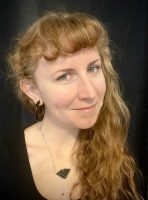
Sara Torgison is an interdisciplinary artist working in ceramic, fiber, and found materials. Her work builds into and extends finite and fragile surfaces to emphasize and inhabit marginal spaces. Strange alliances formed in passages between hard and soft substances are resonant of the shifts inherent in navigating public and private life and the distance between self and other. The action of configuring bridges in transitional zones draws upon traditions of mending and maintenance as a continuous collaborative process.
Sara received an MFA from the University of Cincinnati Department of Design, Architecture, Art and Planning, and a BFA from the California Polytechnic University, Humboldt. Sara is currently Visiting Ceramics Faculty at Miami University of Ohio, and works as a preparator at the Contemporary Arts Center in Cincinnati. She has participated in various artist residencies and workshops, including Penland School of Craft’s winter residency for which she was awarded a distinguished fellowship in 2024. Sara was a 2023 Ohio Arts Council Creative Excellence Grant recipient. Her work is widely exhibited and collected throughout the United States.
HONORABLE MENTIONS

Alex Lukas was born in Boston, MA. With a wide range of influences, Lukas’s practice is focused on the intersections of place and human activity, narrative, history, and invention. His fieldwork, research, and production reframes the monumental and the incidental through intricate publication series, sculptures, drawings, prints, videos, and audio collages. Lukas’s work has been exhibited nationally and internationally, and is included in the collections of the Pennsylvania Academy of the Fine Arts, the Kadist Foundation, the Philadelphia Museum of Art, the San Francisco Museum of Art library, the New York Public Library, and the library of the Museum of Modern Art, New York. Lukas has been awarded residencies at the Bemis Center for the Arts, the Ucross Foundation, the Center for Land Use Interpretation, the Fountainhead, and the John Michael Kohler Arts Center’s Arts/Industry program, among others. He graduated with a BFA from the Rhode Island School of Design in 2003, and received an MFA from Carnegie Mellon University in 2018. Lukas is currently an Assistant Professor of Print and Publication in the Department of Art at the University of California, Santa Barbara, and organizer of CA53776V2.gallery, an experimental exhibition platform on the dashboard of a 2007 Ford Ranger.
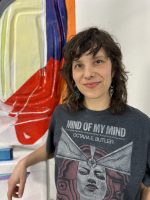
Kristy Hughes is a sculptor, painter, and educator. She received her MFA from Indiana University and her MA and BA from Eastern Illinois University. Hughes was awarded a 2022–23 Visual Arts Fellowship at the Fine Arts Work Center in Provincetown, MA, and has held residencies at the ChaNorth Artist Residency, Hambidge Center for Creative Arts and Sciences, Liquitex Residency at Residency Unlimited, the Studios at MASS MoCA, and a full fellowship at the Vermont Studio Center. Recent solo and group exhibitions include: the Sculpture Center in Cleveland, OH; Provincetown Art Association and Museum, Provincetown, MA; ChaShaMa, New York; Hudson D. Walker Gallery, Provincetown, MA; Soft Times Gallery, San Francisco, CA; Wassaic Project, Wassaic, NY, in addition to exhibitions at universities in North Carolina and South Carolina. Her work has been featured most recently in Maake magazine, New American Paintings, Friend of the Artist, Create magazine, and Vast magazine. Hughes is a full-time lecturer at the University of Vermont in Burlington, VT, where she teaches sculpture, painting, and drawing.
CWA Picks: Winter 2023/2024
posted by CAA — Dec 08, 2023
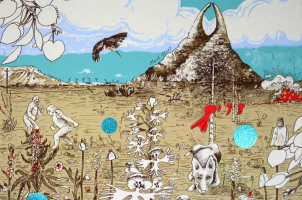
Diane O’Leary (Comanche), Watching the Weather, 1973, gouache on artist’s board, Great Plains Art Museum
The exhibitions selected for the CWA Winter Picks address issues of visibilities and invisibilities, particularly concerning artists coming from communities that have historically been marginalized for reasons that include race, ethnicity, region, religion, sexual identity, and gender. Works on view in the exhibitions on this list collectively evince a diverse set of creative practices, making visible the dynamic cultural production of groups that are often overlooked in art histories past and present. Artists represented include makers of previous eras whose works have been elided in accounts of their time periods as well as contemporary practitioners whose works grapple with continuing invisibilities—in the art world and beyond. The set of exhibitions on this Picks list underscore the critical importance of these artists and their works, insisting on their visibility.
Exhibitions have been organized by the regions where the hosting venues are located. These regions are by no means meant to be comprehensive and reflect Picks submissions by CWA members and colleagues. We are always looking to broaden the scope of these seasonal lists–please consider submitting exhibitions, lectures, grants, residencies, and other events and opportunities to future lists!
United States
Impressive: Antoinette Bouzonnet-Stella
October 21, 2023–October 20, 2024
National Museum of Women in the Arts, Washington, D.C.
Antoinette Bouzonnet-Stella’s ambitious series of 25 prints, The Entrance of the Emperor Sigismond into Mantua (engraved 1675; published 1787), reproduces an Italian Renaissance stucco frieze designed by Giulio Romano (1499 to 1546) for the Palazzo Te in Mantua. This exhibition examines the context in which Bouzonnet-Stella (1641 to 1676) created these engravings, commissioned by Jean-Baptiste Colbert, advisor to King Louis XIV. Her work at the French court was part of Colbert’s plan as vice-protecteur of the Royal Academy of Painting and Sculpture to promote a “French style,” based in classical art. Exquisitely executed, the engravings by Bouzonnet-Stella demonstrate how the power of classical art was borrowed from antiquity, employed in 16th-century Italy, and sought by the 17th-century French court
October 21, 2023–January 28, 2024
SFMOMA, San Francisco, CA
The first retrospective of Pacita Abad features more than 40 works. Over a 32-year career, the prolific artist made a vast number of artworks that traverse a diversity of subjects—from colorful masks to intricately constructed underwater scenes to abstract compositions—revealing visual, material, and conceptual concerns that still resonate today. Abad’s embrace of quilting and other kinds of needlework confounded critics, who dismissed her works as naïve, childlike, and ethnic. In fact, Abad’s multifaceted practice articulated a powerful material politics, reflecting her vision of a nonhierarchical world. This exhibition celebrates Abad’s bold self-determination, commitment to social justice, and radical artistic experimentation.
Colonial Colonnade by Doris Bittar
November 9, 2023–June 1, 2024
Arab American National Museum, Dearborn, MI
Pattern, repetition, and text are the foundation for Doris Bittar’s installation and other works in her first solo exhibition at the Arab American National Museum. Living in San Diego, Bittar draws inspiration from the Arab, Indigenous, and Latinx communities there. Colonial Colonnade is a visual, textual, aural, architectural, and cognitively rich space for interdisciplinary explorations of the Arabic language. In this site-specific installation, Bittar explores how colonization has affected language, among other aspects of culture, while creating a space for reflection and free movement.
Marta Minujín: Arte! Arte! Arte!
November 17, 2023–March 31, 2024
The Jewish Museum, NYC
Marta Minujín: Arte! Arte! Arte! Is the first survey exhibition in the United States of Marta Minujín, a defining force of Latin American art whose trajectory intersected with the major artistic developments of the postwar period. Arte! Arte! Arte! includes nearly 100 works organized to reflect Minujín’s bold experimentation over six decades, charting Minujín’s influential career in Buenos Aires, Paris, New York, and Washington, DC. Works include her pioneering, mattress-based soft sculptures; fluorescent large-scale paintings; psychedelic drawings and performances; and vintage film footage. Ephemeral works—happenings, participatory installations, and monumental public art—are presented through rarely seen photographs, video, and other documentation.
January 27–March 16, 2024
The Galleries at Moore College of Art and Design, Philadelphia, PA
(Re)FOCUS: Then and Now is an exhibition in two parts that aims to celebrate a historically significant 1974 feminist show that was called FOCUS by 1) bringing artworks created by the original 81 participating artists together in one space and 2) presenting new & recent work/s by Philadelphia-based artists who are exploring ideas of gender identity, representation, marginalization, social justice, violence, equality, and empowerment in their contemporary studio practices.
Taking Space: Contemporary Women Artists and the Politics of Scale
September 15, 2023–January 7, 2024
Montclair Art Museum, Montclair, NJ
Taking Space: Contemporary Women Artists and the Politics of Scale invites viewers to consider how space, size, scale, and repetition can be interpreted as political gestures in the practices of many women artists. Inspired by a 2021 exhibition at the Pennsylvania Academy of the Fine Arts (PAFA), Taking Space features 10 works from that original show alongside 13 works from the collection of the Montclair Art Museum. Together these works reveal the varied approaches of women artists for whom space is a critical feature of their work.
October 12, 2023–January 14, 2024
New Museum, NYC
Judy Chicago: Herstory spans Judy Chicago’s sixty-year career to encompass the full breadth of the artist’s contributions across painting, sculpture, installation, drawing, textiles, photography, stained glass, needlework, and printmaking. Expanding the boundaries of a traditional museum survey, the exhibition places six decades of Chicago’s work in dialogue with work by other women across centuries in a unique Fourth Floor installation. Entitled The City of Ladies, this exhibition-within-the-exhibition features artworks and archival materials from over eighty artists, writers, and thinkers.
Fruits of Labor– Reframing Motherhood and Artmaking
November 3–December 23, 2023
apexart, NYC
Fruits of Labor– Reframing Motherhood and Artmaking brings together women artists unpacking the vastly personal yet universal experience of mothering. Encompassing painting, sculpture, video, installation, photography and text-based work, the exhibition evokes motherhood thematically, but also explores the countless tangential ways in which this subject appears in artists’ practice, as a mode of work and being. The artists ultimately make a compelling argument: it is not motherhood that is in conflict with artmaking but the prevailing narratives defining both caregiving and artistic expression.
Making Her Mark: A History of Women Artists in Europe, 1400-1800
October 1, 2023–January 7, 2024
Baltimore Museum of Art, Baltimore, MD
Making Her Mark: A History of Women Artists in Europe, 1400-1800 aims to correct the broadly held but mistaken belief that women artists in Europe were rare and less talented than their male counterparts. With over 200 works, from royal portraits and devotional sculptures to embroidered objects, tapestries, costumes, wax sculptures, metalwork, ceramics, graphic arts, furniture, and more, Making Her Mark features objects from the 15th to 18th centuries that reflect the multifaceted and often overlooked ways that women contributed to the visual arts of Europe.
May 27, 2023–January 1, 2024
National Museum of the American Indian, Bowling Green, NY
Shelley Niro: 500 Year Itch is the first major retrospective of Shelley Niro’s paintings, photographs, mixed-media works, and films. Accessible, humorous, and peppered with references to popular culture, Niro’s art delves into the timeless cultural knowledge and generational histories of her Six Nations Kanyen’kehá:ka (Mohawk) community; addresses stereotypes associated with Native people, particularly women; and ultimately provides purpose and healing.
Raven Halfmoon: Flags of Our Mothers
June 25, 2023–January 7, 2024
The Aldrich Contemporary Art Museum, Ridgefield, CT
Working mainly in portraiture, Caddo Nation painter and sculptor Raven Halfmoon fuses Caddo pottery traditions (a history of making mostly done by women) with populist gestures—often tagging her work (a reference to Caddo tattooing). Her palette is specific and matches both the clay bodies she selects and the glazes she fires with—reds (after the Oklahoma soil and the blood of murdered Indigenous women), blacks (referencing the natural clay native to the Red River), and creams. Her works reference stories of the Caddo Nation, specifically her feminist lineage and the power of its complexities.
No Rest: The Epidemic of Stolen Indigenous Women, Girls, and 2Spirits
January 12, 2023–Extended through 2024
Mitchell Museum of the American Indian, Evanston, IL
The exhibition features 35 original works from 12 collaborating Indigenous artists and draws attention to the crimes perpetrated against Native women and two-spirit individuals in the United States. Rather than present the impacted individuals and communities as statistics, the Mitchell Museum employs an interdisciplinary approach that includes visual stories, interactive content, educational programming, community events, and an awareness campaign to humanize and honor the lives of Indigenous women and two-spirit individuals.
From Paintbrushes to Camera Lenses: Creative Women of the Great Plains, Part II
July 25–December 16, 2023
Great Plains Art Museum, Lincoln, NE
In fall 2018, the Great Plains Art Museum mounted From Paintbrushes to Camera Lenses: Creative Women of the Great Plains, an exhibition that highlighted exceptional work created by female artists from the museum’s permanent collection. To complement other female-focused exhibitions on view during fall 2023 (see below), the museum is organizing part two of this exhibition to showcase many recent acquisitions and other works from the collection by women that were not shown in the first installation.
Supporting Indigenous Sisters: An International Print Exchange
July 25–December 16, 2023
Great Plains Art Museum, Lincoln, NE
Supporting Indigenous Sisters is a print portfolio exchange involving sixteen artists from both Indigenous and non-Indigenous backgrounds. The portfolio was created to help begin conversations on many levels about missing and murdered Indigenous women. Each artist was asked to reach into their own experiences as a female walking this earth. The images from all of the artists advocate for change and for voicing this dark present history.
Threads & Trails: Contemplations of Our Herstories
July 25–December 16, 2023
Great Plains Art Museum, Lincoln, NE
Threads & Trails: Contemplations of Our Herstories is a collaborative exhibition created by five female-identifying artists who connect their personal histories to the conquest of the American West and Indigenous dispossession.
November 3–December 23, 2023
DOCUMENT, Chicago, IL
Natani Notah is a Diné (Navajo) interdisciplinary artist whose practice explores contemporary Native American existence through the lens of Indigenous Feminism. In Thoughts on Being Thrown, Notah connects maps, bodies, and objects to reflect on the larger social issues that repeatedly intersect the lives of women and men alike.
Form, Growth, and Variation: The Experimental Prints of Helen Phillips
November 16, 2023–February 24, 2024
Wright Museum of Art, Beloit College, Beloit, WI
California-born sculptress Helen Phillips found printmaking in the 1930s at Stanley William Hayter’s Atelier 17 in Paris. Though she remained primarily a sculptor, this exhibition chronicles her body of intaglio work—and it is the first solo exhibition of Phillips’s work in the US. From her early, transformative years in Paris, through her move to New York in 1940—when she became a mother—and back to Paris in the 1950s where she produced daring work in color, the prints showcase the artist’s constant affinity to three dimensions, growth in printmaking, and experimentation in line and color.
Nancy Baker Cahill: Through Lines
October 28, 2023–May 19, 2024
Georgia Museum of Art at the University of Georgia, Athens, GA
This solo exhibition highlights the artist’s interdisciplinary artistic practice and the role of emerging technologies in contemporary art. This mid-career survey exhibition is Baker Cahill’s first solo museum show. Expanding upon her background in traditional media, the artist redefines the possibilities of drawing in contemporary art by using augmented reality to transform her graphite-on-paper drawings into immersive environments.
Public Works: Art by Elizabeth Olds
February 3–July 14, 2024
Harry Ransom Center, University of Texas at Austin, Austin, TX
Elizabeth Olds portrayed Depression-era conditions in the United States and was part of a group that promoted the affordability and accessibility of silkscreen printing. This first critically-engaged solo exhibition of her work considers Olds’s lifelong advocacy—from her depictions of labor conditions in the US mining and meatpacking industries, to her satirical social commentary, to her illustrated books for children.
Jen Everett: Could you dim the lights?
February 1–October 5, 2024
Krannert Art Museum, University of Illinois, Champaign, IL
Artist and educator Jen Everett remixes images of herself in conversation with materials she collects to talk about Black life, kinship, and collective gathering. Could you dim the lights? at Krannert Art Museum is her first solo museum presentation. Revisiting childhood photographs, Everett deeply engages rupture—upheaval too familiar in Black life—and recognizes the private, intimate aspects of vernacular images, creatively negotiating ways to maintain their insistent, quiet power. The show is comprised of photographs, moving images, and sound. Inspired partly by her 2022 residency on Fire Island, the exhibition surfaces Black lesbians and queer presence in Black vernacular archives.
Sketch: Contemporary Artists in Conversation with Emily Grace Hanks
October 25–December 6, 2023
Doris Ulmann Galleries at Berea College, Berea, KY
In the summer of 2023, Sara Olshansky and Esther Sitver partook in a residency at the Doris Ulmann Galleries during which they studied the work and personal papers of Emily Grace Hanks (American, 1886-1962) housed in the Berea College Art Collection—and then created a series of artworks in response to what they found. Seeking to “activate” Hanks’ historical artworks for a contemporary, largely undergraduate audience, this exhibition explores the connections that can be made between artists across time and raises questions about what it means to leave an artistic “legacy.” What can we find when we look to the past? What can an archive reveal… and what does it leave obscured? And how can we fill in the gaps?
Deborah Butterfield: P.S. These are not horses
October 1, 2023–June 24, 2024
Jan Shrem and Maria Manetti Shrem Museum of Art at University of California, Davis, CA
For more than 50 years, Deborah Butterfield has explored the horse—both its form and presence. And yet, P.S. These are not horses encourages viewers to understand her sculpture as more than representations of the equine world. Taken from the closing line of a poem by Butterfield’s mentor, William T. Wiley, the title emphasizes the sculptor’s commitment to abstraction and her profound investment in material experimentation. The exhibition surveys Butterfield’s career from her most recent wildfire sculptures to rare early works including ceramics made while studying at UC Davis.
Shiva Ahmadi: Strands of Resilience
January 28–May 6, 2024
Jan Shrem and Maria Manetti Shrem Museum of Art at University of California, Davis, CA
Shiva Ahmadi uses painting as a form of storytelling, combining luminous colors and mystical beings with violent imagery to draw attention to global issues of migration, war, and brutality against marginalized peoples. Ahmadi’s first solo museum exhibition on the West Coast of new works continues her exploration of alternate worlds where women have agency beyond the binary of the beautiful victim or ugly villain. Through her experimentation with the medium of watercolor, Ahmadi probes what lies hidden beneath the surface of the stories we are told, from ancient myths and childhood memories to the modern news cycle.
Samia Halaby: Centers of Energy
February 10–June 9, 2024
Sidney and Louis Eskenazi Museum of Art, Indiana University, Bloomington, IN
Samia Halaby is a pioneer in twentieth-century abstraction and computer-generated art. Born in Jerusalem, Halaby trained as a painter, earning an MFA at Indiana University, where she joined the faculty before becoming the first woman associate professor at the Yale School of Art. This exhibition is her first American survey, featuring more than forty paintings, prints, drawings, and computer-generated works of art from across six decades. The exhibition presents a chronological development of her artistic approach to abstraction, examining formal and thematic relationships across bodies of work.
Yvette Molina: A Promise to the Leaves
October 21, 2023–September 7, 2025
Frances Young Tang Teaching Museum and Art Gallery at Skidmore College, Saratoga Springs, NY
Yvette Molina: A Promise to the Leaves transforms the mezzanine into a museum community space with new art and designs in a site-specific and evolving installation centered around the four elements—earth, air, water, fire—and a fifth constituent, the cosmos. Molina encourages us to consider care as entangled within circles of life—care for one another, whether human or non-human, is care for ourselves and for all. Throughout the exhibition’s two years, Molina is inviting other artists to present their work in the space, regularly re-energizing the installation’s balance between comfort and provocation.
Mary Bauermeister: Fuck the System
November 11, 2023–January 20, 2024
Michael Rosenfeld Gallery, NYC
Mary Bauermeister: Fuck the System is a memorial exhibition and the first solo show to open since the artist’s death in March 2023. It surveys the diverse, interdisciplinary oeuvre of Bauermeister’s seven-decade career. A child of totalitarian Germany who rejected the Constructivist mandates of the country’s postwar schools of art and design, Bauermeister’s art and worldview were always explicitly anti-tradition. Taking its title from a significant assemblage piece, Fuck the System features works from each of her major series. The artist’s fascination with paradox and its potential to reveal fissures in the foundations of entrenched conventions is apparent throughout her work, which both embodies and challenges contradictory binaries.
Ubuhle Women: Beadwork and the Art of Independence
October 4, 2023–January 11, 2024
Godwin-Ternbach Museum at Queens College, CUNY, Flushing, NY
Godwin-Ternbach Museum is pleased to announce Ubuhle Women: Beadwork and the Art of Independence, a spectacular overview of a new form of bead art, the ndwango (“cloth”), developed by by women with a shared vision working together in KwaZulu-Natal, South Africa. The plain black fabric that serves as a foundation for the Ubuhle women’s exquisite beadwork is reminiscent of the Xhosa headscarves and skirts that many of them wore growing up. By stretching this textile like a canvas, the artists use colored Czech glass beads to transform the flat cloth into a contemporary art form of remarkable visual depth. Using skills handed down through generations and working in their own unique style “directly from the soul” (in the words of artist Ntombephi Ntobela), the women create abstract as well as figurative subjects for their ndwangos.
Out of Bounds: Japanese Women Artists in Fluxus
October 13, 2023—January 21, 2024
Japan Society Gallery, New York
This exhibition will be the first to fully explore the essential role of Japanese women in Fluxus, a movement instigated in the 1960s that helped contemporary artists define new modes of artistic expression. Near the 60th anniversary of the movement’s founding, this exhibition highlights the contributions of four pioneering Japanese artists — Shigeko Kubota (1937–2015), Yoko Ono (1933–), Takako Saito (1929–), and Mieko Shiomi (1938–) — and contextualizes their role within Fluxus and the broader artistic movements of the 1960s and beyond.
The exhibition is organized by Midori Yoshimoto, Guest Curator, and Tiffany Lambert, Curator and Interim Director, Japan Society, with Ayaka Iida, Assistant Curator, Japan Society.
Canada
Being and Belonging: Contemporary Women Artists from the Islamic World and Beyond
July 1, 2023–January 7, 2024
Royal Ontario Museum, Toronto, ON
Being and Belonging: Contemporary Women Artists from the Islamic World and Beyond is a bold exhibition exploring the defining issues of our time from the perspective of 25 women artists from or connected to the broader Islamic world spanning across West Africa to Southeast Asia or living in diaspora. Deftly interrogating themes of identity, power, sexuality, and home, this exhibition resists simple stereotypes with outstanding artworks from both emerging and well-established artists.
Swapnaa Tamhane: No Surface is Neutral
September 23–November 26, 2023
Surrey Art Gallery, Surrey, BC
Swapnaa Tamhane’s work challenges the colonial hierarchical separation between art, craft, and design in India. Her artworks include sweeping textile installations where space is transformed by fabric, colour, and light, and works on handmade paper.
Diaspora Dialogues: Archiving the Familiar
October 4, 2023–December 2, 2023
Sur Gallery, Toronto, ON
This exhibition establishes an ongoing dialogue with Latin American diaspora women who are working within the Canadian settler-nation-state, using archives as a strategy of inquiry and resistance. Through dialogic meaning-making processes, these artworks highlight how our social, and political situatedness in the world intersects with memory and power. The artworks in Diaspora Dialogues make visible the living political memory of the diaspora through diverse media art languages, manifesting affective approaches to the archive as a site of interpretation, contestation, and negotiation.
Mexico
Coordenadas móviles: Redes de colaboración entre mujeres en la cultura y el arte (1975-1985)
September 30, 2023–January 14, 2024
Museo de Arte Carrillo Gil, Mexico
This exhibition responds to the urgency of developing new methodologies to rethink the history of recent art in Mexico and the place of women in it. The focus is on collaborative networks that built a creative field forged in differences, dialogue, conflict, complicity, vulnerability, rumor, secrecy, silences, frustration, and friendship, particularly between the years 1975 and 1985. Coordenadas móviles gathers research based on conversations with artists and the study of archives and personal and institutional collections in the country. It also includes commissioned pieces that perform contemporary readings of some historical materials.
Poéticas feministas: Ana Victoria Jiménez / Alicia D’Amico
November 30, 2023–February 11, 2024
Museo de Arte Moderno, Mexico
The exhibition puts in dialogue the documentary and artistic work of photographers Victoria Jiménez and Alicia D’Amico, protagonists of the feminist movement in their respective countries—Mexico and Argentina—who, through a look that ranges from the intimate and poetic to the social, incorporated into their photographic work their social commitment with a feminist aesthetic. The exhibition shows the scope and contacts between Latin American women’s movements, while at the same time situating the trajectory of these two artists in the context of Latin American art.
Europe + The UK
September 16, 2023–January 18, 2024
CO Berlin, Berlin, Germany
Since the 1960s, the US documentarian and portraitist Mary Ellen Mark has advocated for people on the fringes of society. This show features five iconic projects created by the photographer in the 1970s and 1980s. Ward 81 collects her documentation of women in a state mental institution in Oregon, Falkland Road is a reportage on sex workers in Mumbai, Mother Teresa’s Missions of Charity is an eponymous exploration both of the woman and her mission, Indian Circus reproduces a series depicting traveling circus families, and Mark’s award-winning Streetwise project and subsequent Tiny: Streetwise Revisited show her ongoing commitment to telling the story of Erin Charles.
Women In Revolt! Art and Activism in the UK 1970-1990
November 8, 2023–April 7, 2024
Tate Britain, London, UK
This exhibition is the first of its kind – a major survey of feminist art by over 100 women artists working in the UK between 1970 and 1990. It explores how networks of women used radical ideas and rebellious methods to make an invaluable contribution to British culture. Through their creative practices, women’s liberation was forged against the backdrop of extreme social, economic and political change.
September 20, 2023–January 22, 2024
Pinault Collection, Paris, France
This exhibition at the Pinault Collection in France features works on rice paper made by noted feminist artist Mira Schor in the second half of the 1970s, along with a recent painting made in 2022. With a fragile, solitary presence, masks and dresses are covered with highly personal, handwritten texts about the artist’s dreams and her interpretations of them, along with reflections on the Holocaust, to which she lost some of her family, and political writings. “In these works on paper, all that remains of the body are traces of its active, thoughtful character: writing,” notes Schor, “which thus complicates women’s legibility.”
MIDDLE EAST
Afra Al Dhaheri – Give Your Weight to the Ground
November 14, 2023–January 5, 2024
Green Art Gallery, Dubai
This solo exhibition of Afra Al Dhaheri’s work focuses on the concept of grounding: slowing down and observing; becoming conscious of our surroundings; and absorbing and processing. The exhibition is the accumulation of material language developed over time through practice and inquiry. It is layered with the artist’s research into the relation between materiality and the body (a tangible construct), as well as with labour, time, inherited ideologies, and the study of inhabited spaces (intangible constructs).
Roshanak Aminelahi: Faces of Resilience
November 14, 2023–January 2, 2024
Ayyam Gallery, Dubai
In this solo show, Iranian artist Roshanak Aminelahi illuminates diverse stories of women who navigated a male-dominated society and persevered through adversity. Using pointillism and color-blocking techniques, Roshanak captures the distinctive features of these remarkable women. Despite the faceless portrayal, the women are still identifiable, and the portraits symbolize feminine energy and stand as a testament to societal advancement forged through years of resilience and fight for equality by women worldwide.
Meet the 2024 CAA Annual Conference Kress Travel Grant Recipients
posted by CAA — Nov 28, 2023
Recognizing the value of the exchange of ideas and experience among art historians, the Kress Foundation is offering support for scholars participating as speakers at the 2024 CAA Annual Conference. The scholarly focus of the papers must be European art before 1830.
Samuel H. Kress Foundation CAA Annual Conference Travel Fellows 2024

Michela Degortes, Researcher, University of Lisbon
“Approaching the Portrait Gallery of the Academy of Sciences of Lisbon”
Art Collections of Academies of Sciences
Chair: Viktor Oliver Lorincz
The Academy of Sciences of Lisbon was founded in 1779 under the patronage of Maria I of Braganza, thanks to the effort of enlightened figures of the Portuguese aristocracy, clergy, and scientific elite. A print published the same year in the Jornal Enciclopedico to celebrate the event represents the queen surrounded by a circle of learned courtesans while holding hands with a figure symbolizing Knowledge. A portrait of Maria I located in one of the main rooms of the Academy celebrates her role as a patron.
Painted by the Irish artist Thomas Hickey in 1783, it is part of the gallery of paintings held by the Academy of Sciences of Lisbon, which brings together the portraits of remarkable figures of the eighteenth- and nineteenth-century Portuguese cultural milieu. It includes portraits of other members of the royal family as well as of important members of the institute, such as José Francisco Correia da Serra, Manuel de Cenaculo, and Joseph Mayne, whose cabinet of curiosities constitutes the museum of the Academy. Despite the remarkable quality of many of these artworks and their influence on the Portuguese artistic context, the collection still lacks a deep investigation. This paper focuses on the sitters, the artists involved, and the donations that formed the collection, and gives rise to interesting comparisons to similar art collections held by other academies of science.
Charline Fournier-Petit, PhD candidate, University of Maryland and Lecturer, École du Louvre
“Elisa Bonaparte Baciocchi and Diplomacy: A Gift of Fourteen Portraits,”
Women and Diplomatic Art
Chair: Silvia Tita
Tense, if ever conflicting, were the relationships between Elisa Bonaparte Baciocchi, Grand Duchess of Tuscany, and her brother, the emperor Napoleon I. A clever ruler, she rapidly exploited the marble quarries of Carrara for diplomatic purposes, producing abundant portraits of the great sovereigns of her time. Sculpture also served her as a surrogate for diplomatic dialogue with the emperor to affirm her legitimacy as the sovereign of Tuscany and her daughter’s dynastic succession. In 1809, Elisa Bonaparte Baciocchi gifted a series of fourteen marble portraits depicting members of the Bonaparte family to Napoleon I, including her own bust and that of her daughter, Napoléone-Elisa. Extracted from her own quarries and intended for the busy Galerie de Diane at the Palais des Tuileries, this series in marble was both a political message sent not only to the childless emperor, but also to their siblings and to the court. With this gift, Elisa Bonaparte Baciocchi demonstrated her capability to impose her authority over a conquered province and restore the prestige of Carrara. And, by gathering quickly such a large number of sculptures, she was also displaying the production capacity of her marble quarries. The gift also epitomized her diplomatic strategy and dynastic aspiration, thorugh which Elisa Bonaparte Baciocchi turned her motherhood into a powerful argument supporting her political ambitions.

Gohar Grigoryan, , University of Fribourg, Switzerland
“An Illustrated Armenian Law Book and the Ceremonial Mise-en-scène of the King’s Body”
Medieval Ritual Representations: Model of or Model for?
Chairs: Alice Isabella Sullivan and Robert Nelson
A miniature created in 1331 in the Cilician Armenian capital of Sis depicts the young king Lewon IV (r. 1321–1341) at the tense moment of executing—according to the nearby inscription— “just judgment.” The full-page image serves as frontispiece to the oldest extant copy of the Assizes of Antioch—a now-lost Frankish legal code. An important monument of secular law, the Assizes of Antioch was influential beyond the Principality of Antioch and the crusader states, reaching the Armenian Kingdom of Cilicia (1198–1375). Its main purpose was the regulation of the relationship between the suzerain and his vassal lords, and it is exactly these relationships that are represented in the miniature in question, with the king seated on an elevated throne and executing justice over his lords. Initiated by the king himself, the juridical image of Lewon IV was heavily charged with realistic codes, idealizing symbols, and eschatological messages, the intended meanings of which will be tackled in my paper. I will first focus on how the king’s painter, Sargis Pitsak, visualized the ceremonial mise-en-scène around the sovereign’s imposing body and how the latter’s political agenda is reflected in this and other portrayals of him. The discussion continues with questions of visibility and the particular occasions at which the target audience could possibly see an emblematized image like this.

Laura Hutchingame, PhD candidate, University of California Los Angeles
“Red Larch at San Fermo: Ligneous Knowledge in the Upper Adriatic”
Wood: Medium Specificity in the Global Early Modern Period
Chair: Tatiana String
In the late medieval Adriatic, wood was a crucial natural resource and building material that required highly specialized knowledge. From felling alpine trees, preparing logs into rafts, floating rafts downriver, to storing and seasoning timbers, the preparation of lumber involved labor-intensive processes. The “ship-hull ceiling,” in the form of an inverted ship, was an important artifact that proliferated throughout the region from ca. 1300–1450 and was fostered by the collaboration between different wood-based artisans. The ceiling at the church of San Fermo in Verona, executed from ca. 1300–50, offers an exceptional case study. In addition to its innovative design, recent conservation work has uncovered material evidence of how artisans sourced appropriate lumber, prepared timbers, and crafted the ceiling from local red larch. I highlight the specialized ligneous knowledge of artisans who contributed to the production of the ceiling. I show how the ceiling (and wood itself) is a source of interconnections between patrons, artisans, political regimes, and religious orders of this time. At San Fermo, the material and physical qualities of wood are neither representational nor represented but are made visible through crafting.


Cynthia Kok, PhD candidate, Yale University, and Stephanie Archangel, Curator, Rijkmuseum
“Edvardt Abraham Akaboa de Moor, a Master Silversmith from Angola”
Center and Periphery?: Mapping a Future for Research in Netherlandish Art
Historians of Netherlandish Art
Chair: Stephanie Dickey
With origins as a “prestige project,” the Rijksmuseum grapples with the legacy of prioritizing upper-class artworks and narratives, leading to criticisms that the institution is a place of and for elites. Decorative arts within the collection, however, were rarely made by the upper classes. We turn to objects and archives to consider these marginalized makers more closely. We take as a case study a gun by Edvardt Abraham Akaboa de Moor. From archival research, we learn that de Moor was a Black man from Angola who likely found his way to the Netherlands via modern-day Ghana. By 1665, however, de Moor worked as a skilled weapons engraver as a member of the silversmith’s guild and lived with his Dutch wife and children in Utrecht. The Rijksmuseum’s flintlock hunting gun is signed “Edvardt Abraham de Moor” and “tot Utrecht,” claiming ownership of the lock, the most technically difficult part of the gun. As with other marginalized figures, little information remains of de Moor—certainly no portraits nor personal archives—yet traces of him and his descendants remain in the state archives and in museums. We ask, How do we recover the identity of individuals who operated and worked in craft workshops? Can a shift in focus to makers and archives allow museums to interrogate the narratives of marginalized peoples? And how can museums conscientiously address the question, to whom does the agency of craftsmanship belong?
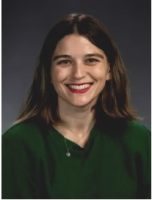 Caroline Delia Koncz, Assistant Professor, Angelo State University
Caroline Delia Koncz, Assistant Professor, Angelo State University
“Lavinia Fontana’s Minerva Unarmed: The Female Nude, as Seen and Painted by Woman”
What Did Women See? Gender and Viewing Experience in Early Modern Italy
Chair: Sabrina De Turk
Created shortly before the artist’s death in 1614, Lavinia Fontana painted a rather curious rendering of the virginal goddess of wisdom for Cardinal Scipione Borghese. Standing in profile, her head tilted speculatively towards the viewer, Minerva holds in her arms a sumptuous dress of luxurious fabrics and gold trim, which she is presumably about to don. Beside her in the room, one can find the deity’s pet owl alongside her previously adorned armor, helmet, and shield, all of which serve to identify the goddess. Such objects were likely necessary to include, since, beyond the subject of the Judgment of Paris, remarkably few Italian artists in the early modern period depicted Minerva unrobed, and even fewer were women. I consider the unique iconography of Fontana’s painting as well as the intended message this work held for its viewers in seventeenth-century Italy. In addition to considering the male owner’s reception of the piece, this talk will more closely study how female beholders of the period might have analyzed the nude Minerva, when fashioned by the hand of a woman painter.
Matthew Sova, PhD candidate, Johns Hopkins University
“Representations of Performance in the Konstanz Holy Sepulcher”
Medieval Ritual Representations: Model of or Model for?
Chairs: Alice Isabella Sullivan and Robert Nelson
Located in Konstanz Cathedral, a thirteenth-century holy sepulcher stands as significant material evidence for widespread medieval practices of architectural copying. Understood as a reconstruction of the Tomb of Christ aedicule in the Church of the Holy Sepulcher in Jerusalem, scholars emphasize the Konstanz holy sepulcher’s reliance on the plans, dimensions, spaces, and structures of its illustrious model. These interpretations often downplay variations in appearance and function between the two microarchitectural objects, as well as regional contexts for these deviations in the Konstanz copy. Specifically, the Konstanz holy sepulcher features an extensive sculptural program of figures from Christmas, Easter, and the early church, which has no precedent in the Jerusalem aedicule. My paper investigates these sculptures, linking them to a local tradition of religious performances undertaken in and around the Konstanz holy sepulcher. Numerous medieval texts from Konstanz describe ritualized Holy Week reenactments in the city’s cathedral, performed by the clergy outside of the Mass. These paraliturgical events emphasized the roles of the three Marys, apostles, and angels, central figures in the Konstanz object’s artistic program. I show that these sculptures not only visualized the scriptural events of Easter, but served as permanent, idealized representations of Holy Week performances. Consequently, I argue that the Konstanz holy sepulcher’s sculptural program both enhanced the function of the copy as a stage for paraliturgical drama, and perpetually reinscribed historical and spiritual connections between its associated medieval community and the site of Christ’s death and resurrection in Jerusalem.
 Mark H. Summers, Lecturer, University of Arkansas, Fayetteville
Mark H. Summers, Lecturer, University of Arkansas, Fayetteville
“Ritual Practice as Community Building in the Birds Head Haggadah”
Medieval Ritual Representations: Model of or Model for?
Chairs: Alice Isabella Sullivan and Robert Nelson
The Birds Head Haggadah, dated to around 1300 and produced in the Upper Rhine region of Southern Germany, is one of the earliest extant illuminated Ashkenazic haggadot, or manuscripts, that contain the ritualistic text recited at the Passover Seder. The book is well-known for its unusual approach toward figuration, styling Jewish people as hybrids with human bodies and heads of griffins, featuring the curving beaks of eagles and the pointed ears of lions. Throughout the manuscript, figurative illuminations in this style occupy the margins, enacting the historical events remembered at Passover and performing ritualistic activities associated with celebration of the feast. A pair of openings from the manuscript exemplifies this twofold approach. On folios 24v-25r, a scene from the Exodus unfolds across the lower margins. Though the story here refers to historical events of persecution, the figures that receive loaves of unrisen bread and turn to follow Moses appear in medieval styles of dress. While the story relates the flight from Egypt and pursuit by Egyptian soldiers, here the aggressors are likewise rendered as contemporary figures. As non-Jews, Pharoah and his soldiers appear as fully human figures with blank faces and are outfitted as German knights bearing the black eagle flag of the Holy Roman Empire. On the next opening spanning folios 25v-26r, the marginal program presents a scene of the ritualistic practice of making unleavened matzo, an act of abstinence that makes the historical suffering of the Jewish people tangible for the duration of Passover. The figures animating this scene, which is presented as a contemporary activity rather than a historical narrative, appear visually indistinct from the actors rendered in the previous opening. Here, the Jewish men and women working together to prepare dough, divide portions, and bake bread are all dressed in the same kinds of clothing as the followers of Moses, complete with modest hair coverings for women and the pointed hats worn by adult men that were at times compulsory accessories for men in northern medieval Europe. The approach in the visual program outlined in these openings creates a temporal elision connecting historical events with contemporary ritualistic practices. The result establishes the Passover Seder as what Marc Epstein calls a “metahistorical topos,” or a kind of temporal interconnectivity that links past, present, and future events and practices for the book’s users/viewers. I consider how the representation of ritual in the Birds Head Haggadah engages with metahistorical narratives to build community and identity for its medieval users.
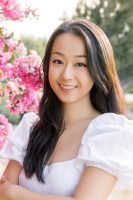 Joyce Zhou, PhD candidate and Teaching Fellow, Yale University
Joyce Zhou, PhD candidate and Teaching Fellow, Yale University
“Playing with Porcelain: Reimagining the Self with the Early Modern Dutch Dollhouse”
Miniature Designs and Worldly Simulations: Questions of Scale in Early Modern Arts
Chair: Wenjie Su
Sometime between 1743 and 1751, a Dutch woman named Sara Rothé assembled two elaborate dollhouses. Rothé describes a porcelain display room in one of her dollhouses, which survives today in the Kunstmuseum in The Hague. The room contains a variety of miniature arts, including miniature porcelain imported by the Dutch East India Company from China and Japan, as well as domestic imitations in ivory and glass. Pioneered by Amalia van Solms, Princess of Orange (1602–1675), this practice of dedicating entire rooms to the collection and display of East Asian porcelain was associated exclusively with female members of the House of Orange. While Rothé did not have the status nor financial means to recreate van Solms’ porcelain display in full-scale, she was able to successfully do so in the intimate realm of her dollhouse.
I explore the intersection of two early modern Dutch female collecting practices: the curation of dollhouses by wealthy Dutch women, and the formation of dedicated porcelain display chambers in Dutch royal circles. Building on the work of Hanneke Grootenboer and Susan Stewart, I argue that early modern Dutch dollhouses facilitated aspirational and imaginative thinking. Rothé’s porcelain room, which encapsulates Dutch royal porcelain chambers on a reduced scale, was a controlled and manipulable space in which Rothé adopted an alternate subjectivity and engaged in imaginative play. Here, Rothé could take on the persona of a Dutch royal, handling the various fruits of global commercial exchange as she engaged in immersive self-fashioning.
Finalists for the 2024 Morey and Barr Awards
posted by CAA — Nov 16, 2023
CAA is pleased to announce the 2024 finalists for the Charles Rufus Morey Book Award and the two Alfred H. Barr Jr. Awards. The winners of the three prizes, along with the recipients of other Awards for Distinction, will be announced in January 2024 and presented during Convocation in conjunction with CAA’s 112th Annual Conference, February 14–17, 2024.
CHARLES RUFUS MOREY BOOK AWARD SHORTLIST, 2024
Delia Cosentino and Adriana Zavala, Resurrecting Tenochtitlan: Imagining the Aztec Capital in Modern Mexico City, University of Texas Press
Matthew Francis Rarey, Insignificant Things: Amulets and the Art of Survival in the Early Black Atlantic, Duke University Press
Tatiana Reinoza, Reclaiming the Americas: Latinx Art and the Politics of Territory, University of Texas Press
Andrew M. Shanken, The Everyday Life of Memorials, Zone Books
Jennifer Van Horn, Portraits of Resistance: Activating Art during Slavery, Yale University Press
ALFRED H. BARR JR. AWARD SHORTLIST, 2024
Emily Braun and Elizabeth Cowling, eds., Cubism and the Trompe l’Oeil Tradition, The Metropolitan Museum of Art
James A. Doyle, Oswaldo Chinchilla Mazariegos, and Joanne Pillsbury, eds., Lives of the Gods: Divinity in Maya Art, The Metropolitan Museum of Art
Diana Seave Greenwald, ed., Betye Saar: Heart of a Wanderer, Princeton University Press and the Isabella Stewart Gardner Museum
Leo G. Mazow, Storied Strings: The Guitar in American Art, Virginia Museum of Fine Arts
David Pullins, and Vanessa K. Valdés, eds., Juan de Pareja: Afro-Hispanic Painter in the Age of Velázquez, The Metropolitan Museum of Art
ALFRED H. BARR JR. AWARD FOR SMALLER MUSEUMS, LIBRARIES, COLLECTIONS, AND EXHIBITIONS SHORTLIST, 2024
Christophe Cherix, Courtney J. Martin, Akili Tommasino, and Stephanie Weissberg, Barbara Chase-Riboud Monumentale: The Bronzes, Princeton University Press, Princeton, and the Pulitzer Arts Foundation
Elliot Bostwick Davis, Edward Hopper & Cape Ann: Illuminating an American Landscape, Rizzoli Electa, New York, and The Cape Ann Museum, Boston
Apsara DiQuinzio, Jeff Gunderson, Alexander Nemerov, and Elaine Y. Yau, Adaline Kent: The Click of Authenticity, Rizzoli Electa New York and the Nevada Museum of Art, Reno
Perrin Lathrop, ed., African Modernism in America, Yale University Press, New Haven, and the American Federation of Arts
CWA Picks: Summer 2023
posted by CAA — May 31, 2023
CAA’s Committee on Women in the Arts (CWA) curates a seasonal list of must-see exhibitions. The CWA Summer 2023 picks highlight the rich contributions of women-identifying African, Latinx, and Indigenous artists, bringing their voices to the forefront. These artists explore the legacies of their respective mediums and their enduring significance in contemporary art. Unafraid to tackle pressing social issues, their works offer a powerful lens through which to examine themes of gender, sexuality, race, and ethnicity. By amplifying marginalized perspectives, these exhibitions provoke meaningful conversations and challenge existing narratives in the art world.
Tender Loving Care
July 22, 2023–July 28, 2025
Museum of Fine Art, Boston
This exhibition explores the theme of care through contemporary art. The act of creating and appreciating art is a form of care, and the exhibition highlights how artists address this concept through their materials, ideas, and processes. The exhibition showcases around 100 works from the museum’s collection, organized into five thematic groupings: threads, thresholds, rest, vibrant matter, and adoration. Examples of care in art can be seen in Gisela Charfauros McDaniel’s portrait of her mother, Nick Cave’s Sound Suit, and textiles and fiber art by Sheila Hicks, Howardena Pindell, and Jane Sauer. Through these works and others, visitors are invited to consider how care can inspire new models for living and feeling in the present and the future.
Creativity in the Time of COVID-19: Art as a Tool for Combatting Inequity and Injustice
August 25–September 30, 2023
Buffalo NY: Squeaky Wheel, Buffalo Arts Studio + Buffalo Game Space
In collaboration with the Andrew W. Mellon Foundation, Michigan State University, and SUNY Buffalo’s Amatryx Lab & Studio, this exhibition features a range of BIPOC, LGBTQ+, and Buffalo-based artists and creatives to center marginalized experiences of the pandemic and social justice concerns.
Black Venus
Through August 20, 2023
Museum of the African Diaspora, San Francisco
BLACK VENUS, curated by Aindrea Emelife is an exhibition that surveys the legacy of Black Women in visual culture – from fetishized, colonial-era caricatures to the present-day reclamation of the rich complexity of Black womanhood by 18 artists (of numerous nationalities and with birth years spanning 1942 to 1997). This exhibition is a celebration of Black beauty, an investigation into the many faces of Black femininity and the shaping of Black women in the public consciousness – then and now.
In BLACK VENUS, archival depictions of Baartman and other historical Black women pair with the vibrant, narrative portraiture by some of today’s most influential Black image-makers whose work deals with layered narratives of Black femininity.
This exhibition reckons with difficult visual histories. It features some themes and images that are derogatory and many that are empowering. Sensitive visitors should be aware that several artists in the exhibition employ nudity and sexual imagery to explore their ideas.
Amalia Mesa-Bains: Archeology of Memory
Through August 13, 2023
UC Berkeley Art Museum and Pacific Film Archive (BAMPFA), Berkeley
Amalia Mesa-Bains: Archaeology of Memory is the first retrospective exhibition of the work of longtime Bay Area artist Mesa-Bains. Presenting work from the entirety of her career for the first time, this exhibition, which features nearly 60 works in a range of media, including fourteen major installations, celebrates Mesa-Bains’s important contributions to the field of contemporary art locally and globally.
Shaped by the Loom: Weaving Worlds in the American Southwest
Through July 9, 2023
Bard Graduate Center, NYC
Shaped by the Loom: Weaving Worlds in the American Southwest invites you to explore the world of Navajo weaving. This dynamic gallery and online experience presents never-before-seen textiles created by Diné artists. These historic blankets, garments, and rugs from the American Museum of Natural History are situated alongside contemporary works by Diné weavers and visual artists, such as Barbara Teller Ornelas and Lynda Teller Pete. Shaped by the Loom highlights seasonal cycles that guide the harvesting of dye plants, the cosmologies that inform a weaver’s work, and the songs, stories, and prayers that are woven into every piece. The items in the exhibition will be accompanied by artist interviews, interactive storytelling, and stunning panoramic views of the Navajo Nation. Shaped by the Loom elevates the voices of Indigenous artists and makers to express the cultural legacy and continued vibrancy of weaving traditions in the American Southwest.
The Figure, Reclaimed
A Renaissance of the female body in visual culture
July 5–August 4, 2023
Carolla Arts Exhibition Center, Missouri State University
Throughout the history of visual culture, figurative painting has been regarded as one of the highest forms of Western art. Dazzling displays of hyper-realistic anatomical mastery and expansive narrative scenes depicting multiple figures through complex perspectives dominated as the pinnacle of art-making for centuries. While the artists of these historic images were all white male painters, it was the female body that was often leveraged for these narratives. Further, female artists were also excluded from painting these historic scenes and denied access to nude models to even attempt to study the art of figural painting.
The Figure, Reclaimed, seeks to celebrate and explore the Renaissance of the female body and the female figurative painter in visual culture. Through the work of Aneka Ingold and Livia Xandersmith, this exhibition explores how female figurative painters have combined the traditional art of figurative painting with contemporary, stylized approaches to redefine and expand upon what it means to be a figurative painter, ruminate on the female experience, and how representations of the female body are consumed.
As women face losing bodily autonomy in today’s contemporary society, what does it mean to be a female figurative painter in today’s context? What stories must be told on the scale of figurative painting about what it means to identify as a woman today? Why is the female body a contested landscape, and why does this form hold a sense of home base for visual culture? Is it the embodied connection to humanity and life?
Madeleine Hunt-Ehrlich: Too Bright to See
Perez Art Museum, Miami
Through January 7, 2024
Madeleine Hunt-Ehrlich (b. 1987) is a filmmaker and artist whose work blends narrative and documentary traditions to explore stories and experiences of Black women in the Americas.
Hunt-Ehrlich’s experimental narrative artwork Too Bright to See (Part I) draws on her extensive research on the legacy of Suzanne Roussi-Césaire, a writer and anticolonial and feminist activist from Martinique who, along with her husband, Aimé Césaire, was at the forefront of the Négritude movement during the first half of the 20th century. Roussi-Césaire would also become an important Surrealist thinker, influencing the likes of painter Wifredo Lam and writer André Breton. However, despite her critical contributions to Caribbean thought and Surrealist discourse, until recently much of her work was overlooked.
Too Bright to See (Part I) weaves archival materials with cinematic narrative scenes filmed with an unconventional and modern cast. Drawing inspiration from Caribbean aesthetics and Surrealist artwork, this film installation brings attention to new aspects of Roussi-Césaire’s legacy that are undocumented in the public arena, while addressing the broader question of the continued erasure of women from historical accounts.
Carrie Mae Weems: Reflections for Now
Barbican Art Gallery, London
June 21–September 3, 2023
Opening 22 June 2023, Barbican Art Gallery is proud to present the first major solo exhibition of Carrie Mae Weems in a UK institution. Widely considered to be one of the most influential American artists working today, Weems (b.1953) is celebrated for her exploration of cultural identity, power structures, desire, and social justice through a body of work that develops questioning narratives around race, gender, history, class and their systems of representation.
Highlighting her remarkably diverse and radical practice, this survey brings together an outstanding selection of photographic series, films, and installations spanning over three decades, many of which have never been seen before in the UK. Presenting the development of her unique poetic gaze and formal language from the early 1990s to the present day, this exhibition reflects on Weems’s pioneering career. On display are works from her early iconic Kitchen Table Series (1990) which explores how power dynamics are articulated in the domestic sphere and the potential of the home as a space for resistance, to her acclaimed series Roaming (2006) and Museums (2016) where Weems’s muse confronts architecture as the materialisation of political and cultural power. Her oeuvre challenges dominant ideologies and historical narratives created by and disseminated within science, architecture, photography, and mass media.
The exhibition is accompanied by Carrie Mae Weems: Reflections for Now, the first publication devoted to the artist’s writings. It will highlight Weems’s influence as an intellectual, reflecting the dual nature of her career as an artist and activist. A public programme of events, including a programme of films in Barbican cinema, will also run throughout the course of the exhibition.
Gio Swaby: Fresh Up
Through July 3, 2023
Art Institute of Chicago
Gio Swaby is a multidisciplinary artist whose textile-based practice explores the intersections of Blackness and womanhood. Her embroidered portraits are anchored in the connections she forges with her subjects: each portrait begins with a photo shoot in which her sitters are captured in a moment of self-awareness and empowerment. In her textile interpretations, Swaby foregrounds their hair, clothing, and jewelry—highlighting and celebrating the subjects’ use of fashion as unapologetic self-definition and self-expression.
This exhibition—Swaby’s first solo museum show—brings together seven of Swaby’s series from 2017 through 2021, such as My Hands Are Clean, Love Letters, and Pretty Pretty, along with approximately 15 new works, including her largest work to date, a commission for the US Embassy in Nassau, Bahamas. The title of the show, Fresh Up, developed with the artist, is a Bahamian phrase often used as a way to compliment someone’s style or confident way of being. Swaby has remarked, “It holds a lot of positivity and joy. It also speaks to the tone of confidence and power that I want to create with these works. I love that it is a way to form connections through a simple phrase.”
Lynn Hershman Leeson: Phantom Limb
Through July 8, 2023
Altman Seigel, San Francisco
Altman Siegel proudly presents a historical exhibition of works from Lynn Hershman Leeson’s Phantom Limb series, which was created in the 1980s. At the time that it was created, the Phantom Limb collages illustrated the more insidious impacts of mass media and technology on women’s bodies. Created prior to the advent of Photoshop, this body of work borrows from the visual language of advertising, fusing female forms with technology. Seductively posed women merge with cameras, TV screens, and electrical plugs, pointing to ways in which gendered mass media representations shape and distort women’s self-image. At once alluring and disarming, these black-and-white photo collages grapple with the absorption of female identity into modern media at a time when the depths of this issue were just beginning to be explored.
In this series Hershman Leeson was already musing on the implications of surveillance when she describes cameras as a “capture system”:
“This photographic series…suggests that we are not only being watched by surveillance systems, but that ‘capture’ systems are endemic to our society. The series questions individual complicity in a system that simultaneously steals images and warps personal identity. The seductive alliance of surveillance and capture inspired the sexually provocative positions in the anthropomorphic images.” – Lynn Hershman Leeson
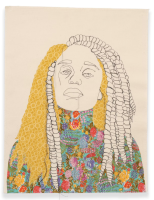
My Hands Are Clean 4, 2017 Gio Swaby. Courtesy of Claire Oliver and Ian Rubinstein. © Gio Swaby
CAA’s Committee on Women in the Arts, Archival Recordings from the 1994 Annual Conference
posted by CAA — Aug 18, 2022

Entry in 1994 Annual Conference program of the Committee on Women in the Arts’ session.
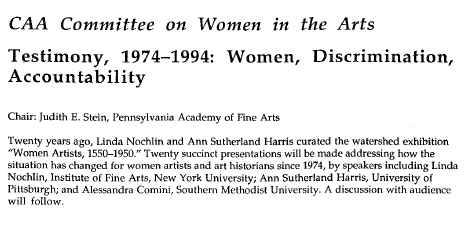
Abstract entry of the Committee on Women in the Arts session in the 1994 Annual Conference abstracts program.
Fifty years ago in 1972, CAA founded its first committees devoted to women in the arts. This year we celebrate the 50th anniversary of this history by sharing historic materials from CAA members and archives that intersect with feminism at the organization, CAA’s Committee on Women in the Arts, and from its Affiliated Societies, the Women’s Caucus for Art (WCA) and The Feminist Art Project (TFAP). CAA established the Committee on the Status of Women (COSW), the first committee to focus on women in CAA’s history, in 1972. The COSW was renamed the Committee on Women in the Arts (CWA) in 1996, and it continues to promote women in the visual arts field.
In 1994, CAA’s Committee on Women in the Arts held a panel chaired by Judith Stein that featured speakers Linda Nochlin, Ann Sutherland Harris, and Alessandra Comini. Their individual presentations look at the progress of women artists and art historians over the previous twenty years, since 1974. The talks use the exhibition, Women Artists 1550-1950, curated by Nochlin and Harris, as a benchmark for discussion. This landmark exhibition toured four American museums in 1976-77, such as the Brooklyn Museum in 1977, and raised public awareness of the many gifted women painters, sculptors, and architects.
The talks in this session compare and contrast the attitudes that prevailed when the show was being organized with views in the nineties. Releasing these recordings of the session almost another twenty years later, it is an opportunity to reassess the status of women in the arts once again.
Biographies of the speakers:
Judith E. Stein chaired CAA’s Committee on Women in the Arts from 1992 to 1997, initiating a series of awards to women in the arts. A writer and curator, Stein studied at Barnard College, and has a Ph.D. in art history from the University of Pennsylvania.
Stein was recently awarded the Lifetime Achievement Award by the Women’s Caucus for Art (WCA) in 2020. She has written at length on feminism and women artists, beginning with her 1981 doctoral thesis on the neoclassic iconography of Sappho, one of the first feminist dissertations in art history at the University of Pennsylvania. She helped organize Philadelphia Focuses on Women in the Visual Arts (FOCUS) in 1973-74 and edited the WCA’s newsletter from 1975 to 1977. She was also a member of the WCA national advisory board from 1979 to 1981. Her first piece of art criticism was published in Art in America in 1974, reviewing a Judy Chicago exhibition. She also wrote on Cecilia Beaux, the first woman to teach at the Pennsylvania Academy of the Fine Arts, Feminist Art Journal, Winter (1975–1976). Her work has also appeared in Art News, The New York Times Book Review, and the National Public Radio’s Fresh Air and Morning Edition.
Stein served on the advisory board of Philadelphia’s Leeway Foundation for women artists, (1994–2002) and was the first curator of Leeway Founder Linda Alter’s collection of art by American women artists. Stein wrote the foundational essay for Making Their Mark: Women Artists Move into the Mainstream, 1970–1985 (Abbeville, 1989) and “Collaboration,” for The Power of Feminist Art (Harry N. Abrams, 1994). She curated The Likeness of Being: Contemporary Self-Portraits by Sixty Women (DC Moore Gallery, New York, 2000), and co-curated Picturing the Modern Amazon: The Hypermuscular Woman (The New Museum of Contemporary Art, New York, 2000).
She is the author of Eye of the Sixties, Richard Bellamy and the Transformation of Modern Art, (Farrar, Straus & Giroux, 2016). Other curatorial projects by Stein include Red Grooms, A Retrospective for the Pennsylvania Academy of the Fine Arts, and I Tell My Heart: The Art of Horace Pippin, which traveled to the Metropolitan Museum of Art in 1995 and earned a best catalogue award from AICA/USA.
Among her honors is a Creative Capital/Andy Warhol Foundation Arts Writers Grant; a Pew Fellowship for literary non-fiction; and a Lannan Foundation writing residency in Marfa, Texas. Learn more about Judith Stein’s career on her webpage and in this WCA announcement.
Alessandra Comini is University Distinguished Professor of Art History Emerita at Southern Methodist University in Dallas, Texas. She received her B. A. degree from Barnard College, her M. A. from the University of California at Berkeley, and her Ph.D. “with distinction” from Columbia University where she taught for ten years. She has also taught at the University of California, Berkeley, Yale University, served as the Alfred Hodder Resident Humanist at Princeton University, and was named Distinguished Visiting Lecturer at Oxford University‘s European Humanities Research Centre (1996). Voted “outstanding professor” by her students sixteen times, she has been extended the Distinguished Teaching Prize of the Meadows School of the Arts and the United Methodist Church Scholar/Teacher of the Year Award (1996).
An undergraduate and a graduate scholarship in Comini’s name have been established by former students, one a professor of surgical oncology in Little Rock, Arkansas; the other, founder and co-owner of an international antiques business in Dallas. The author of major essays and eight books, one of them nominated for the National Book Award (see publications), Dr. Comini was awarded the Grand Decoration of Honor by the Republic of Austria in recognition of her contributions to Germanic culture in 1990. Her lively revisionist work in the history of women artists was acknowledged in 1995 by the Women’s Caucus for Art with the coveted Lifetime Achievement Award. A vibrant lecturer in both English and German, she is in great demand in America and abroad as a speaker in her chosen fields of art and cultural history as well as musical iconography (see lectures)…. (Source: https://www.alessandracomini.com/introduction/)
Ann Sutherland Harris was born in Cambridge, England and was educated in both the USA and the UK (BA 1961 & PhD 1965, University of London at the Courtauld Institute of Art). She has lived in the States since 1965, teaching at Barnard College and Columbia University, and at several other universities before joining the faculty of the University of Pittsburgh as Professor of the History of Art and Architecture in 1984. There she taught a variety of courses to under- graduate and graduate students. She retired from teaching in 2012.
Harris’s research focuses mainly on 17th century Europe, especially painters and sculptors working in Italy and France. She has a particular interest in artists’ drawings and what they reveal about artists’ ideas and intentions, as well as in artists’ self-perceptions and the roles they play as they interact with patrons and their demands. She has published books about Andrea Sacchi and Gian Lorenzo Bernini’s drawings and, most recently, a substantial survey of European 17th century art and architecture (Laurence King, London; 2005; 2nd ed. 2008). A full bibliography of her publications is available on her university’s website.
Harris became interested in the past and present situation of women during the late 1960s and 1970s, when she became an activist for improved status for women in academe. She testified before the US Congress in 1970 about the discrimination faced by women in higher education, and then helped to set up the Women’s Caucus for Art, an advocacy organization for women active as artists, art historians, and museum professionals: she was its first President (1972-74). She also encouraged Wilhelmina Holladay to found a museum devoted to women artists, which she did twenty-five years ago: the National Museum for Women in the Arts in Washington, DC.
Art history and activism came together when Harris and Linda Nochlin co-curated the traveling exhibition Women Artists, 1550-1950 for the Los Angeles County Museum in 1976-7 (also shown at the University Art Museum, Austin, Texas; the Carnegie Museum of Art, Pittsburgh; and the Brooklyn Museum, New York). She was responsible for artists active in the 16th to 18th centuries, and Nochlin for the artists working after 1800, and she contributed most of the catalogue entries for the earlier artists as well as an introduction that provided the essential historical background for the pioneering women artists who emerged in Europe in the mid-sixteenth-century. Since then, she has occasionally written about twentieth-century women, including Alice Neel (1900-84), Elizabeth Murray (1940-2006) and Edna Andrade (1917- 2008), as well as contributing catalogue essays, articles and reviews about Artemisia Gentileschi and Sofonisba Anguissola, and a survey of recent scholarship on Sofonisba, Artemisia, Lavinia Fontana and Elisabetta Sirani for the exhibition, Italian Women Artists from the Renaissance to the Baroque held at the women’s museum in Washington in 2007.
Linda Nochlin was an American feminist art historian most well-known for her 1971 article “Why Have There Been No Great Women Artists?,” which widely influenced art history, leading to new research and awareness of history and how it is written, analyzed, and taught, as well as launching the field of feminist art history.
Nochlin graduated from Vassar College in 1951 with a bachelor’s degree in philosophy and earned a master’s degree in English from Columbia University in 1952. Her doctorate in art history from the Institution of Fine Arts at New York University (NYU) focused on realism and Gustave Courbet. From 1952 to 1979, Nochlin taught art history at Vassar and published two books on 19th-century art in 1966, Realism and Tradition in Art, 1848–1900 and Impressionism and Post-Impressionism, 1874–1904. She shifted her focus to feminism in 1969, when she taught one of Vassar’s first art history courses on women, “The Image of Women in the Nineteenth and Twentieth Centuries.” After her landmark article, in 1976 Nochlin co-curated “Women Artists: 1550–1950” with Anne Sutherland Harris.
Nochlin left Vassar for a professorship at the graduate school at the City University of New York, where she stayed from 1980 until 1990. In the eighties she published more on Courbet, such as Courbet Reconsidered (1988) with Sarah Faunce, which was also an exhibition at the Brooklyn Museum. Nochlin also published Women, Art, and Power, and Other Essays (1988) and The Politics of Vision: Essays on Nineteenth-Century Art and Society (1989). Nochlin than taught at Yale University (1990-1992) and then became a professor at NYU.
During this time, she published Women in the 19th Century: Categories and Contradictions (1997), Representing Women (1999), and Bathers, Bodies, Beauty: The Visceral Eye (2006).
In 1972, CAA founded its first committees devoted to women in the arts. As a part of this yearlong 50th anniversary celebration, we are sharing historic materials from CAA members and archives that intersect with feminism at the organization, including CAA’s Committee on Women in the Arts (CWA) and our Affiliated Societies, Women’s Caucus for Art (WCA) and The Feminist Art Project (TFAP).
This celebration culminates in a program and reception at Boston University’s Joan and Edgar Booth Theatre on Friday, September 23, 2022. This program will reflect upon the incredible history of feminist pioneers at the organization while looking toward a more inclusive, equitable future through the continued work of the CWA. The members of CWA are carrying the torch of feminism during this crucial time of precarity for women’s rights.
Over the next couple months, visit this site (CAA News) and our social media pages to explore more about this history and items from our archives.
IN MEMORIAM: SAM GILLIAM
posted by CAA — Jun 30, 2022
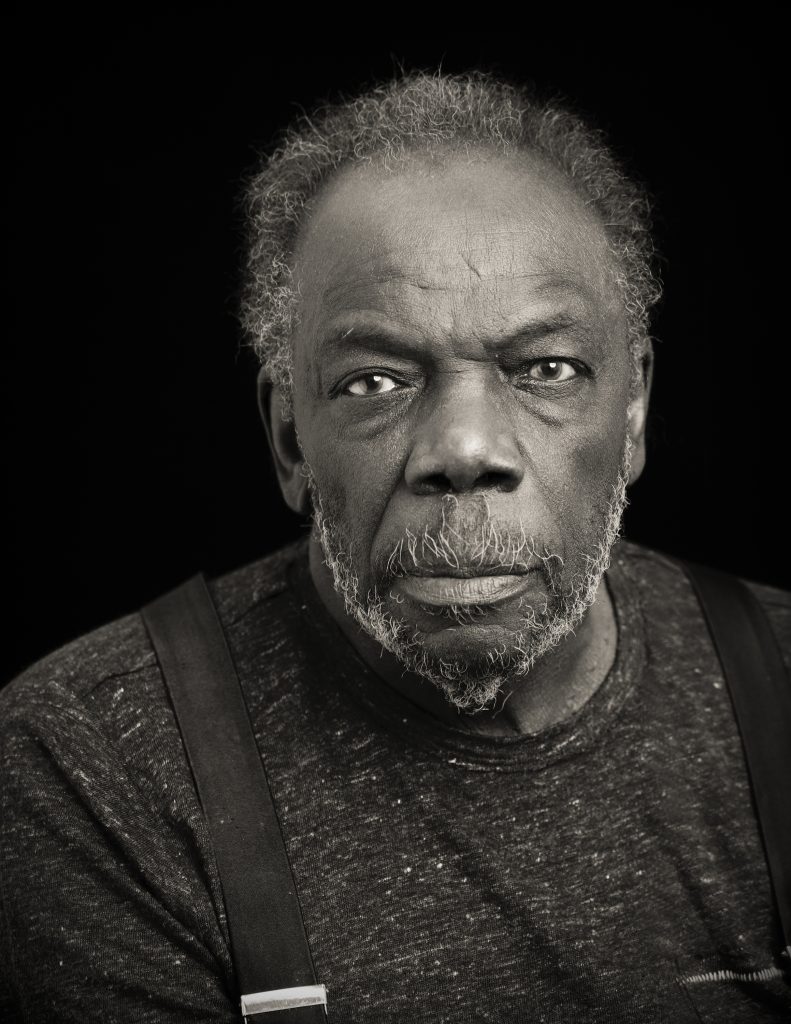
Photograph provided by Pace Gallery
Sam Gilliam, the famous and groundbreaking abstract American painter, died in his home in Washington D.C. on June 25 at the age of 88. A part of the Washington Color Field painters of the 1960s, Gilliam freed his paintings from traditional supports and became well known for draping and folding his abstract canvases. Interested in color, form, and process, his approach combined painting with sculpture, and used pouring and staining techniques to create broad fields of color.
His works are included in many of the nation’s most prominent art collections and museums, including the Metropolitan Museum of Art, the Museum of Modern Art, the Tate Modern, and the National Gallery of Art.
Gilliam’s enormous draped canvases were the most visible aspect of his career, but he also supported his fellow artists through collectives, mentorship, and service. As a lifetime member of CAA he contributed actively to the CAA community in myriad ways – donating artwork, serving on juries for our distinguished awards, serving on committees, and sitting on our board of directors.
As the chair of the Sub-Committee on Public Art of the CAA Artists’ Committee he helped draft our 1987 standards and guidelines for public artworks. This was revised and reapproved in February of 2022 and remains a canonical guide for artists working in the public realm.
He also donated artwork alongside Kiki Smith, Faith Ringgold, and Miriam Shapiro to support CAA’s Professional Development Fellowship Program in the early 2000s.
In addition, he volunteered his time as a board member from 1985-1988 and served on our juries for the CAA Artist Award for a Distinguished Body of Work and Distinguished Artist Award for Lifetime Achievement.
Read more about his career here.
CWA Picks: Summer 2022
posted by CAA — Jun 30, 2022
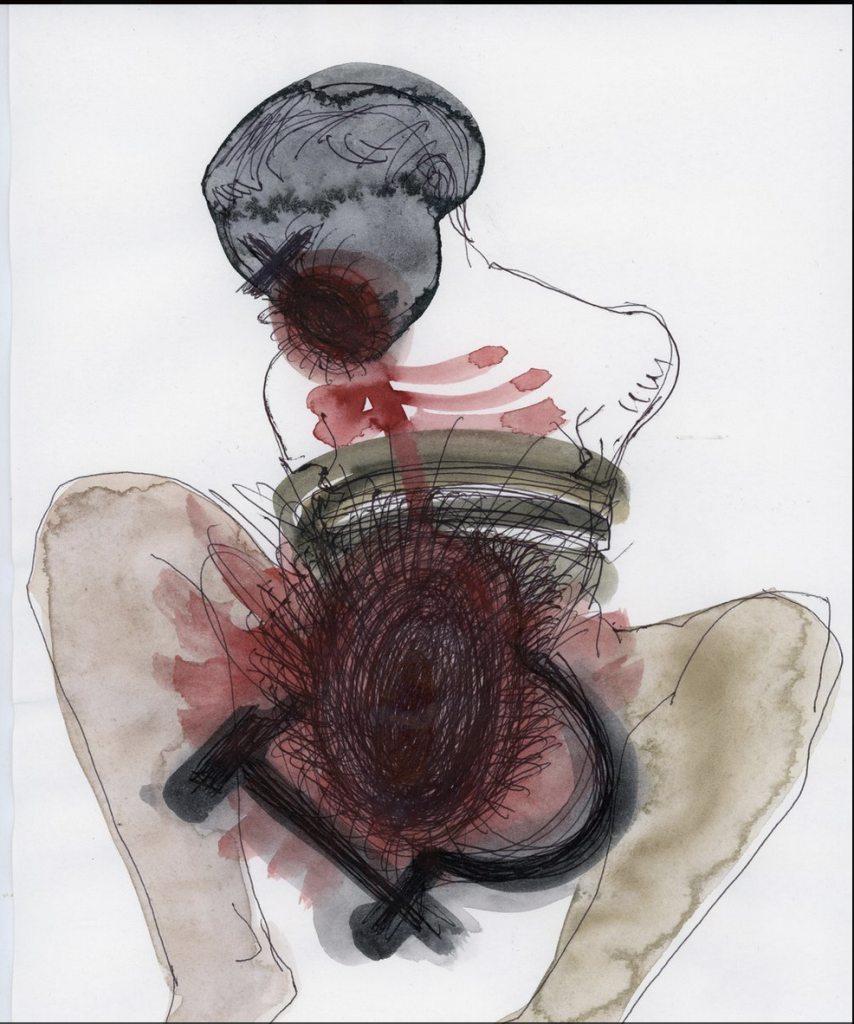
Vlada Ralko, Lviv Diary No. 020, 2022, ink and watercolor on paper, 11.5 x 8.5 inches, ©Vlada Ralko, courtesy of Voloshyn Gallery and Fridman Gallery
Exhibitions and Scholarship Selected by the Committee on Women in the Arts (CWA)
If trauma names the psychic impact of damaging events, it also points to the possibility of working through the mute immobility that is trauma’s primary effect. Gender hierarchies are part of trauma and the recovery from it. In What Does a Woman Want? Reading and Sexual Difference (1993), Shoshana Felman makes a broad and provocative claim: “every woman’s life contains explicitly or in implicit ways, the story of trauma.” The scholarship and exhibitions featured here substantiate Felman’s insight. In a few exhibitions, trauma is pronounced and linked to specific events, such as Russia’s assault on Ukraine. In others, trauma must be discerned in portrayals that attest to the diffuse reality of gender inequity. All of the work tells us that the current historical moment is rife with danger and violence and thereby underscores the necessity of feminism’s insights.
Each month, CAA’s Committee on Women in the Arts selects the best in feminist art and scholarship. The following exhibitions and events should not be missed.
Trauma-Informed Pedagogy: Addressing Gender-Based Violence in the Classroom
Jocelyn E. Marshall and Candace Skibba (eds.)
Emerald Publishing, 2022
What role can teaching play in the effort to address gender-based violence? This collection offers practical, creative, and theoretical strategies for addressing this specific form of trauma in the classroom. The editors assert that teaching can create spaces that counter the “silence” and “unempathetic discourse” that gender-based violence most often meets when it is brought into the open. Featuring the artwork of and scholarship on the indigenous artist Julia Rose Sutherland, as well as a conversation between curators Monika Fabijanska and Dineke Van der Walt, Trauma-Informed Pedagogy foregrounds visual art practices as tools for exploring trauma and finding possibilities for recovery. This makes perfect sense, given the “troublesome visual representations” that block out the fact that gender-based violence is pervasive but systematically denied, a trauma in and of itself.
Women Painting Women
Museum of Modern Art, Fort Worth, Texas
Through September 25, 2022
Feminist art tends to be associated with practices that defy medium, genre, and the art historical canon, but what about the women painters who situate their work firmly in the figurative tradition? Curated by Andrea Karnes, Women Painting Women features the work of forty-six painters who have made women their subjects since the 1960s and illuminates the feminism that can animate figuration. Creatively rendering women’s “bodies, gestures, and individuality,” together these portraits play with a range of scales that move from the modest (Somaya Critchlow) to the gigantic (Jenny Saville) and suggest the spaces allotted to women and the spaces they want to claim. Women Painting Women is a refreshingly straightforward but decidedly necessary theme, given how rare it is to see women as artists and artistic subjects at the same time.
Martine Syms, Neural Swamp
Philadelphia Museum of Art
Through October 30, 2022
Martine Syms’ multi-channel video installation Neural Swamp deploys the tactics of surveillance, cinema, and sport to investigate what it means to be a Black woman in a hyper-digitized world. Blurring the line between horror and humor, Syms works with algorithms and artificial intelligence to question the technologies that erase and exploit Black bodies, voices, and narratives. Accompanied by Kit’s World, a series of videos that also explore technological mediation, Neural Swamp was commissioned by the Future Fields commission in Time-Based Media.
Women at War
Fridman Gallery, New York
July 6 through August 26, 2022
In collaboration with Voloshyn Gallery in Kyiv, Ukraine, Monika Fabijanska curated this timely exhibition that documents how Ukrainian women artists explore the gendered dimensions and consequences of war. Several artworks were made after Russia’s invasion of Ukraine in February 2022, others date from the eight years of war following the annexation of Crimea and the creation of separate ‘republics’ in Donbas in 2014. Together the artwork in Women at War poses questions about women as the natural victims of war and creates a nuanced picture, both of Ukrainian feminism, and the visual practices that have accompanied it. Through a wide array of themes, mediums, styles, Women at War narrates a nuanced history of women in Ukraine and is, more broadly, a historiographic project that meditates on how women become visible when history is written as a war against their agency.
Cornelia Parker
Tate Britain, London
Through October 16, 2022
One of Britain’s most beloved contemporary artists, Cornelia Parker works with domestic objects and reconfigures their scale through playful visual storytelling that often defies gravity. By doing so, Parker’s sculptures materialize the violence that undergirds everyday life and suspends it in the field of vision for all to see.
Ancestors Know Who We Are
Online
National Museum of the American Indian
The Smithsonian, Washington D.C.
Ancestors Know Who We Are is the Smithsonian’s first exhibition to feature Black-indigenous women artists. The title is borrowed from Storm Webber’s 2016 letterpress print, a statement she crafted in black sans serif letters in response to comments that she is neither Black nor Native enough. Across a range of mediums that trouble distinctions between tradition and the contemporary , the artists in this exhibition challenge assumptions that Native and Black experiences have essential and easily discernible features. In so doing, they unsettle the visual economy of race and the permission it gives to question who people are.
Andrea Bowers
Hammer Museum, University of California, Los Angeles
Through September 4, 2022
This is Andrea Bowers’ first museum retrospective and it surveys two decades of her artwork’s intimate connection to activism. A large part of Bowers’ work reframes protest banners and posters to show that political address is a form of creative expression that seeks to imagine and write more just worlds. Isolation and despair haunt this artwork, but the austerity Bowers brings to her images of protest ultimately draws attention to the bravery of individual activists as they seek collectivities that can confront and transform the regressive politics of twenty-first century mobs.
Yayoi Kusama, A Poem in My Heart
Yayoi Kusama Museum
Tokyo, Japan
Through August 28, 2022
This exhibition highlights the Surrealism that pulsates through Yayoi Kusama’s hallucinatory visions. Featuring paintings from the 1950s, viewers can see further into the artist’s inner landscapes and psychic worlds. The artwork overflows with organic, idiosyncratic forms that twist and undulate to reveal the poetics of Kusama’s creative heart.
Suzanne Lacy, The Medium is Not the Only Message
Queens Museum
Queens, New York
Through August 14, 2022
The Medium is Not the Only Message is a major survey of an artist who helped define feminist performance in the 1970s. Lacy has consistently put social issues—sex work, violence against women, racism, labor rights, poverty, and aging—at the center of her work. In recent years, she has become an artist who expands the reach of the museum, bringing institutions into the public worlds in which they are situated. This exhibition focuses on two dimensions of Lacy’s practice: personal narrative and conversation. Both underscore the value she places on relationality, co-creation, and mutual learning, all of which rebuff the presumption that technological mediums really allow people to communicate with each other. Featured projects were selected for their connections to Queens and demonstrate Lacy’s commitment to community-based practices that move “Between the Door and the Street,” the title of a 2013 project that featured women talking about the issues that impact their lives.
Meet the 2022 CAA Annual Conference Support Grant Recipients
posted by CAA — Feb 03, 2022
CAA offers Annual Conference support grants to graduate students in art history and to international artists and scholars. Meet this year’s recipients of our named support grants and find information about their presentations at the conference and their corresponding session below. Dozens of other support grants were given to CAA members through the Presidents Council of CAA and the “Pay it Forward” initiative.
CAA TRAVEL GRANT IN MEMORY OF ARCHIBALD CASON EDWARDS, SENIOR, AND SARAH STANLEY GORDON EDWARDS
The CAA Support Grant in Memory of Archibald Cason Edwards, Senior, and Sarah Stanley Gordon Edwards was made possible by Mary D. Edwards. The grant supports women who are emerging scholars at either an advanced stage of pursuing a doctoral degree or who have received their PhD within the two years prior to the submission of the application.
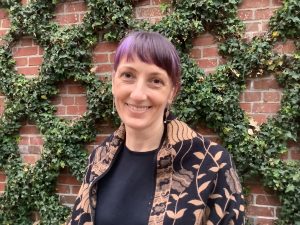
Kristan Hanson, Dumbarton Oaks
Presentation at the Annual Conference: “Nurturing Growth: Eva Gonzalès’s La Plante favorite and Berthe Morisot’s Fillette aux jacinthes”
Session: Enchanted by Nature: Picturing Gendered Plants and Female Agency in Europe and China (17th – 19th Century)
Kristan M. Hanson is an art historian and plant humanist. Her research examines the historical significance of individual plants and botanical forms in art to deepen understandings of human/plant interactions and anthropogenic environmental change. She currently holds a consultancy as Managing Digital Editor for the Plant Humanities Initiative at Dumbarton Oaks, prior to which she was a 2020–2021 academic year fellow. Hanson has also received fellowships and awards to support her research from the Oak Spring Garden Foundation, HASTAC Scholars program, Hall Center for the Humanities, and Institute for Digital Research in the Humanities.
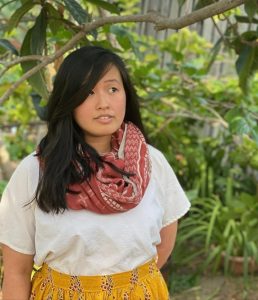
Cynthia Kok, Yale University
Presentation at the Annual Conference: “’Een bloempoth van parlemoer’: Painting Life in Dirck van Rijswijck’s Mother-of-Pearl Floral Panels”
Session: Analogous Matter: Skeuomorphism as Method
Cynthia Kok is a Ph.D. candidate at Yale University. Her dissertation focuses on sensorial engagement in making and craft experiments with mother-of-pearl in the early modern Dutch world. Cynthia received her MA from Bard Graduate Center and her BA from the University of California, Berkeley. She has held curatorial internships at the Metropolitan Museum of Art’s Costume Institute, the Frick Collection, and the Smithsonian American Art Museum and she is the 2021-2023 Kress History of Art Institutional Fellow at the Leiden University Centre for the Arts in Society (LUCAS).
Honorable Mention:
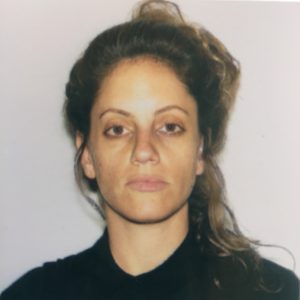
Shoghig Halajian, University of California San Diego
Presentation at the Annual Conference: “Destroying the Form: On the Spatial Politics of Rafa Esparza’s bust: A Mediation on Freedom”
Session: Monumentality in Art: Memory, History, and Impermanence in Diaspora
Shoghig Halajian is a curator and art historian, who serves on the Board of Directors at Human Resources LA and was previously Assistant Director at LACE (Los Angeles Contemporary Exhibitions). She is co-editor of the online journal Georgia, in collaboration with Anthony Carfello and Suzy Halajian, which is supported by a Creative Capital | Andy Warhol Foundation Arts Writers Grant. She has presented projects at the Hammer Museum and the ONE Archives at USC Libraries in Los Angeles; Le Magasin–National Center for Contemporary Art in Grenoble; Al Ma’mal Foundation for Art in Jerusalem, UKS in Oslo, among others. She was a 2021 Research Fellow at Ocean Space–TBA 21 in Venice. She is a Ph.D. candidate in Art History, Theory and Criticism with a Critical Gender Studies emphasis at University of California, San Diego, where her research explores contemporary queer aesthetics and performance through a critical race lens, focusing on artistic experiments with collaboration.
SAMUEL H. KRESS FOUNDATION CAA CONFERENCE SUPPORT FELLOWSHIP FOR INTERNATIONAL SCHOLARS
Recognizing the value of the international exchange of ideas and experience among art historians, the Kress Foundation is offering support for international scholars participating as speakers at the 2022 CAA Annual Conference. The scholarly focus of the papers must be European art before 1830.
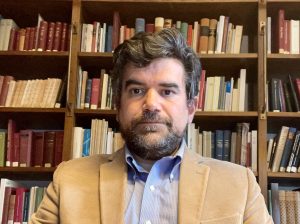
Lorenzo Vigotti, Kunsthistorisches Institut in Florenz
Presentation at the Annual Conference: “Diplomatic Exchanges and Architectural Inventions along the Silk Road: The Case of Soltaniyeh and Santa Maria del Fiore”
Session: Beyond the Silk Road
Lorenzo is a trained architect with a M. Arch. from the University of Florence, Italy, and a Ph.D. in architectural history from Columbia University with a dissertation on the origin of the Renaissance palace. He is currently a post-doc at the Kunsthistorisches Institut in Florence, where he studies the shift in spatial organization in domestic residences between the 14th and the 15th century, with an emphasis on early collecting practices and the birth of the studiolo as a manifestation of power by the urban oligarchy. Together with Shahid Beheshti University in Tehran, Iran, Lorenzo is exploring the circulation of architectural knowledge between medieval Persia and Italy, specifically the materiality and the problems of preservation of brick dome structures. Finally, he oversees the virtual reconstruction of the now lost Florentine ghetto at the Medici Archive Project.
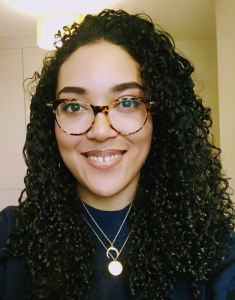
Ana Cristina Howie, University of Cambridge
Presentation at the Annual Conference: “’Favoured Black Attendants’ in ‘Splendid State Portraits’? Genoese merchants, Flemish painters, and the Spanish Atlantic Slave Trade”
Session: Archive, Object, Image: Reading Against the Grain in the Dutch and Spanish “Golden Ages”
Ana is originally from New Zealand and completed her bachelor’s degree in the History of Art and French at the University of Auckland. She continued her studies at the Université Paris-Sorbonne, then earned her MA in the History of Art at the Courtauld Institute in London, specializing in early modern Netherlandish artistic production. She began her PhD under the supervision of Professor Ulinka Rublack at the University of Cambridge in 2019, funded by the Prince of Wales International Scholarship. Her doctoral research investigates the relationships between women, dress, and portraiture in seventeenth-century Genoa, with a focus on the oeuvres of Flemish painters Peter Paul Rubens and Antony van Dyck. She is the recipient of the inaugural Society for Renaissance Studies/British School in Rome Residential Doctoral Research Scholarship for 2021/22. Her work and projects have been supported by the Royal Historical Society, Centre for Research in the Arts, Social Sciences and Humanities, Magdalene College, Cambridge, and the Cambridge Trust.
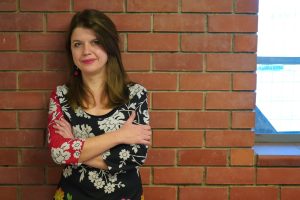
Iro Katsaridou, Museum of Byzantine Culture, Thessaloniki, Greece
Presentation at the Annual Conference: “Through Foreign Eyes: Curating the 1821 Greek War of Independence”
Session: Instrumentalizing Memory and the Politics of Commemoration
Iro Katsaridou was recently (2021) appointed Director of the Thessaloniki Museum of Photography, Greece. Previously, she has worked as curator of modern and contemporary art at the Museum of Byzantine Culture in Thessaloniki. She studied art history at the Aristotle University of Thessaloniki and the Université Paris I-Sorbonne, and also pursued museum studies at the City University of New York. Her doctoral dissertation (Aristotle University, 2010) focused on contemporary Greek photography. Iro has researched photography and art in wartime (World War I and II), curated exhibitions and edited related catalogues in this particular field. More recently (2021) she has curated an exhibition at the Museum of Byzantine Culture on the aspects of Philhellenic movements in art and the Greek War of Independence. She has taught as adjunct faculty at several Greek universities. She has co-edited two books on photography during the Nazi Occupation of Greece (1941-1944), one on the art of World War I in Greece, and written articles and book chapters on photography, museum policies, as well as the relationship between contemporary Greek art and politics. She has presented her research in international conferences, while in 2019 and 2020 she participated in the CAA-Getty International Program.
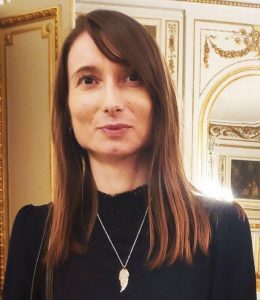
Jana Kantoříková, Sorbonne University/CNRS
Presentation at the Annual Conference: “Crucified Women: The Way of the Cross in the Symbolist Movement”
Session: Women in Art in the second part of the 19th century-early part of the 20th
Jana Kantoříková is an associated researcher at the Center of Interdisciplinary Research on Central, Eastern and Balkanic Europe at Sorbonne University/CNRS. She received her PhD in Slavic Philology, History of Czech Literature and Literary Theory at the Charles University in Prague and the University of Regensburg (2018). She taught at the University of Passau (Germany) and the Sorbonne University. Her research focuses on European modernisms and cultural transfers between France, Germany and the Czech lands, for example “Horror Fragmenti in Czech Symbolism” in Angst, Anxiety, Anguish in Fin de Siècle Art and Literature (Cambridge Scholars Publishing, 2020) or “Le Cycle de la volupté et de la mort : ‘livre empoisonné’ et ornementation du péché” in L’art (décoratif) du livre fin-de-siècle: éloge du parergon (Éditions Otrante, 2021). She is currently working on projects related to the reception of Friedrich Nietzsche in Central Europe and the blackness imagery in the Czech lands in the 19th century.
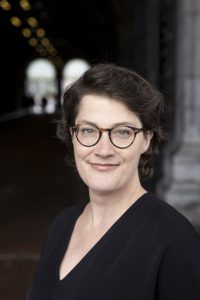
Judith Noorman, University of Amsterdam
Presentation: “The Invisibility Myth. Women, Art and Household Consumption in the Dutch Republic”
Session at the Annual Conference: Archive, Object, Image: Reading Against the Grain in the Dutch and Spanish “Golden Ages”
Judith Noorman is Assistant Professor of Art History in the Early Modern Period and Director of the Amsterdam Centre for Studies in Early Modernity (both at the University of Amsterdam). As of September 2021, she is leading a governmentally funded NWO VIDI project: The Female Impact. Women, Art and Household Consumption in the Dutch Republic, 1580-1720. She earned her PhD at the Institute of Fine Arts, New York University and has conducted postdoctoral research at the Drawing Institute, Morgan Library & Museum. At the 110th CAA Annual Conference, she is presenting a paper on The Invisibility Myth. Women, Art and Household Consumption in the Dutch Republic, as part of the HNA-sponsored session Archive, Object, Image: Reading Against the Grain in the Dutch and Spanish “Golden Ages”, which is chaired by Carrie J. Anderson and Marsely Kehoe.
CAA-GETTY INTERNATIONAL PROGRAM
Every year since 2012, the CAA-Getty International Program has enabled art historians, museum curators, and artists who teach art history to attend CAA’s Annual Conference. This program is funded on an annual basis by the Getty Foundation. Meet the CAA-Getty International Program participants here.




